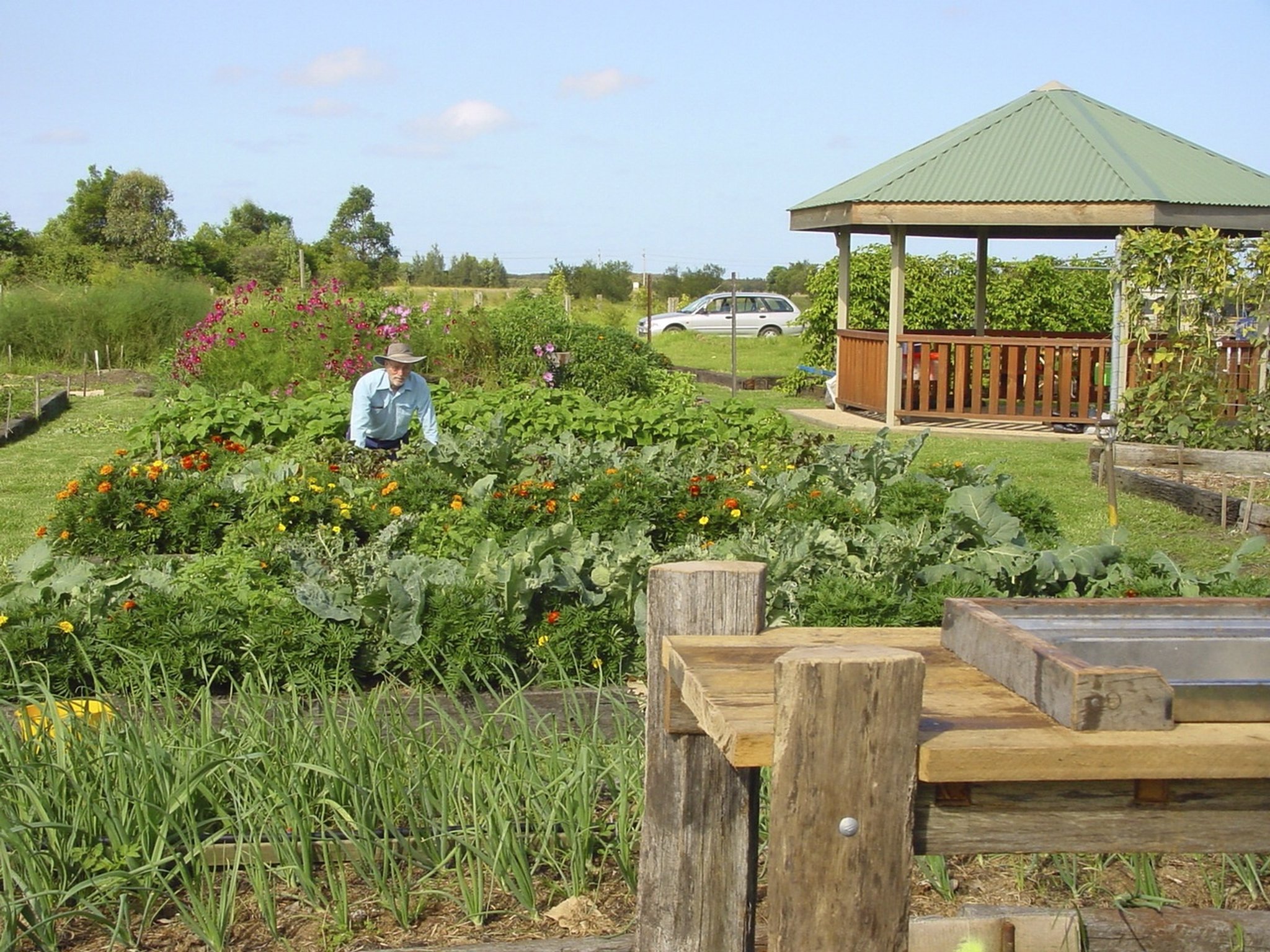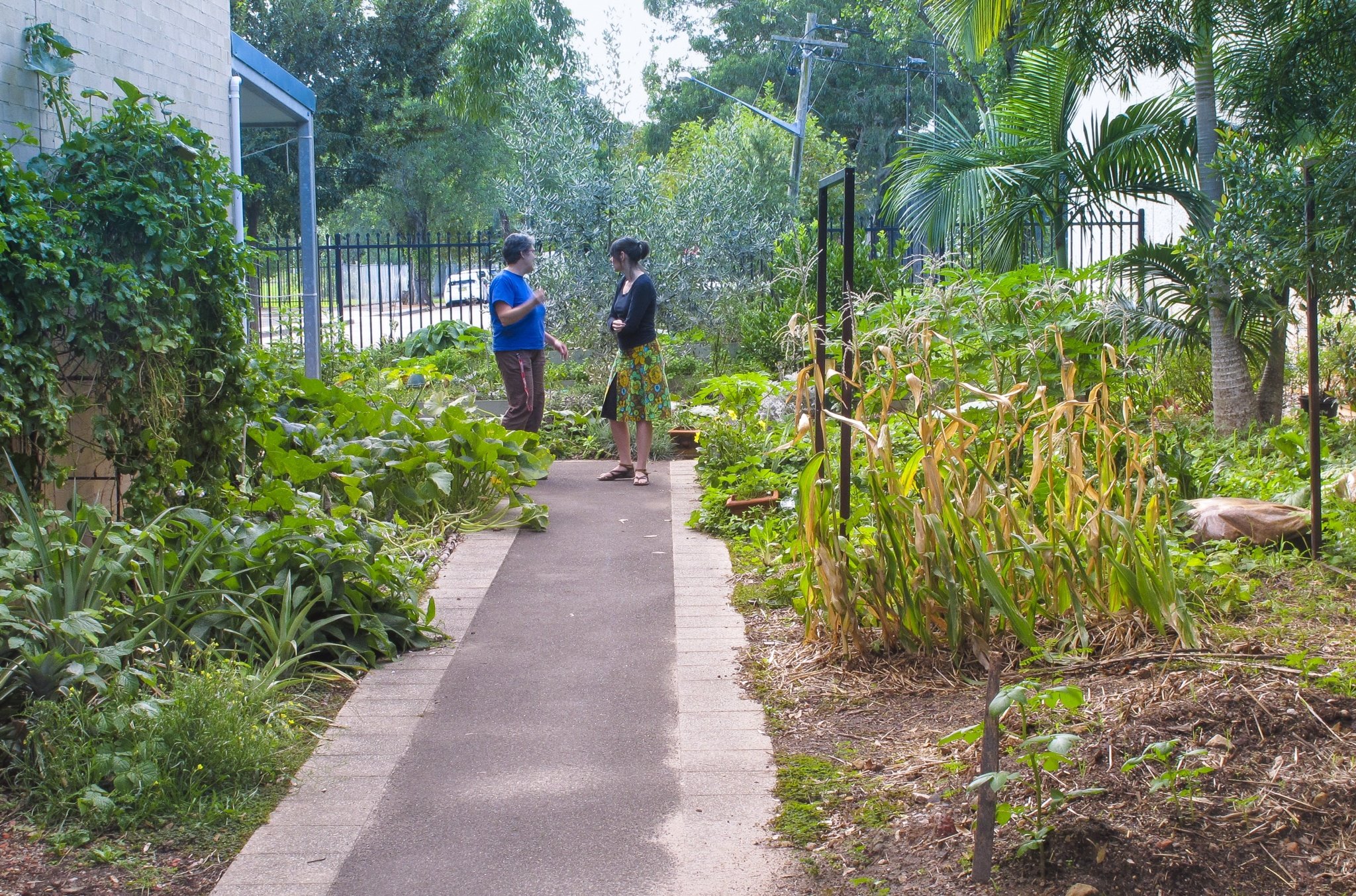

Russ Grayson
Cities feeding themselves — 2
Urban agriculture the community garden way

ABOVE:
Blue Mountains resident and community gardener, Virginia Littlejohn, in the community garden's collection of heritage apple trees.
The photo, two above, shows Virginia with David and Mark, two of the community garden's anchoring presences.
MORE on community gardens:
www.communitygarden.org.au
Facebook:
https://www.facebook.com/australian.communitygarden?ref=ts&fref=ts
Sydney Community Garden Network:
https://www.facebook.com/sydney.communitygarden?ref=hl&ref_type=bookmark
Pinterest:
http://www.pinterest.com/austcomgardens/
COVER PHOTO: Alexndria Community Garden, Sydney,
PHOTOS & text: Russ Grayson www.pacific-edge.info
Blue Mountains resident and community gardener, Virginia Littlejohn, in the community garden's collection of heritage apple trees.
The photo, two above, shows Virginia with David and Mark, two of the community garden's anchoring presences.
MORE on community gardens:
www.communitygarden.org.au
Facebook:
https://www.facebook.com/australian.communitygarden?ref=ts&fref=ts
Sydney Community Garden Network:
https://www.facebook.com/sydney.communitygarden?ref=hl&ref_type=bookmark
Pinterest:
http://www.pinterest.com/austcomgardens/
COVER PHOTO: Alexndria Community Garden, Sydney,
PHOTOS & text: Russ Grayson www.pacific-edge.info
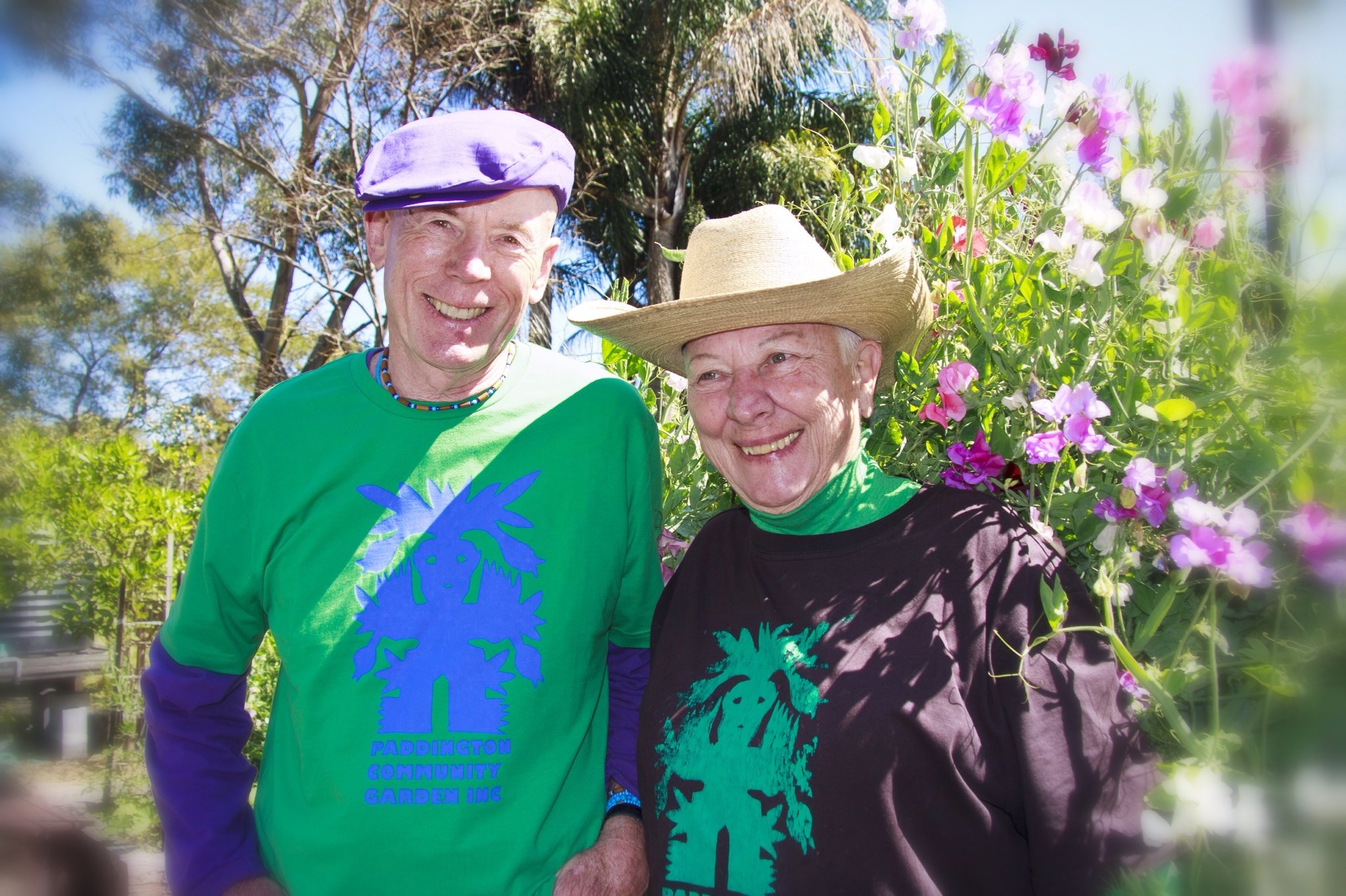
Food production in the city...
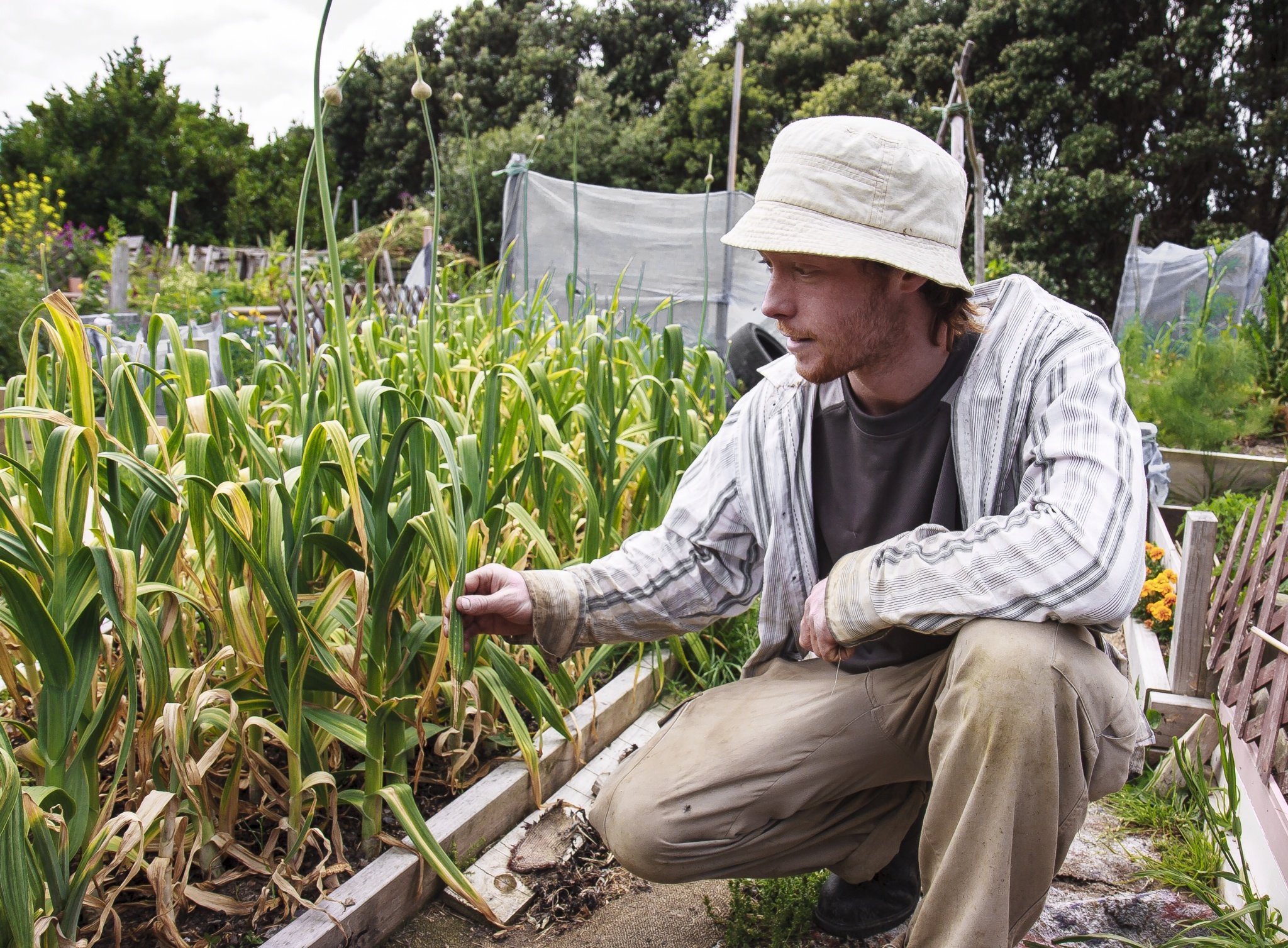


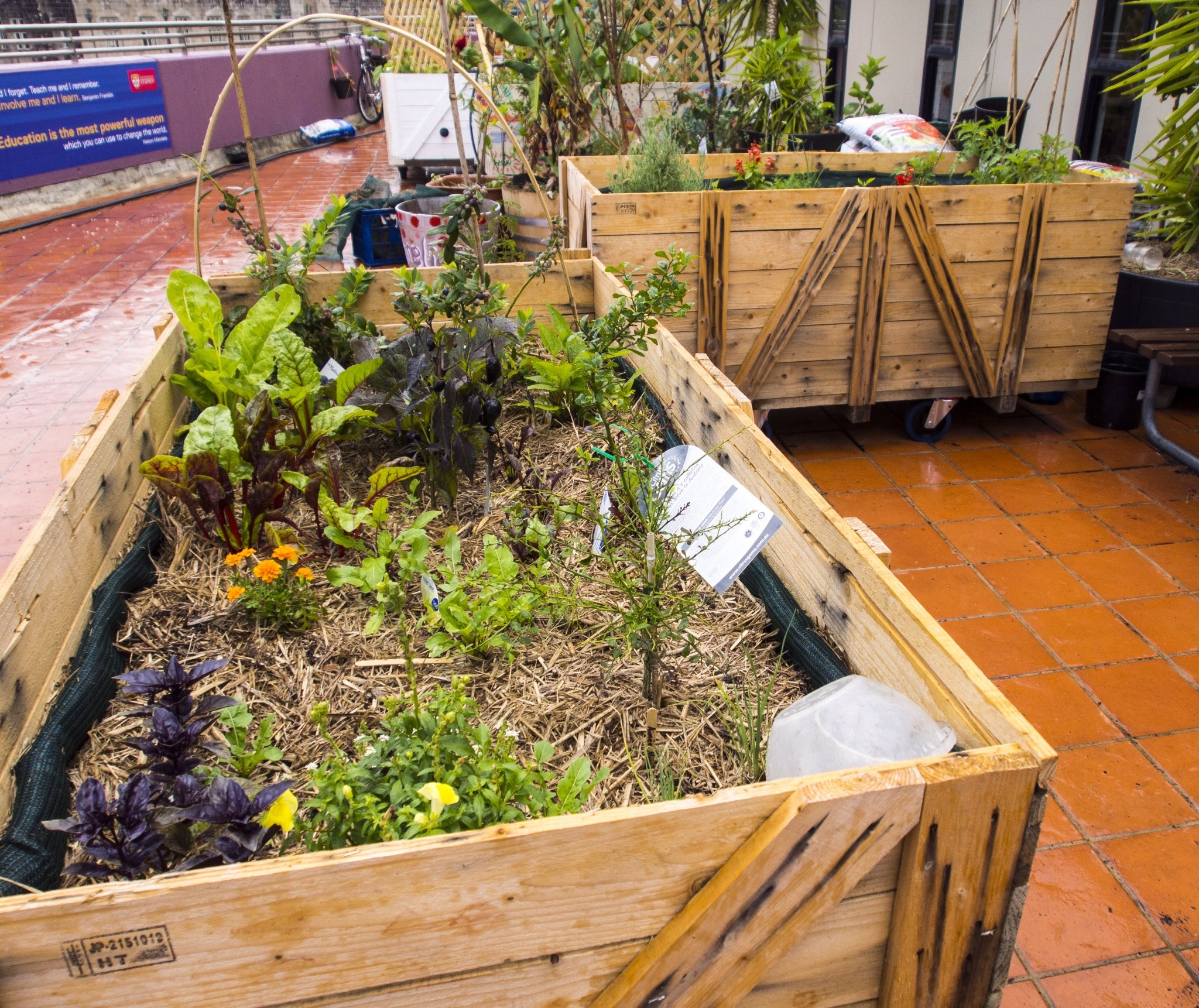
Gardens everywhere you look...
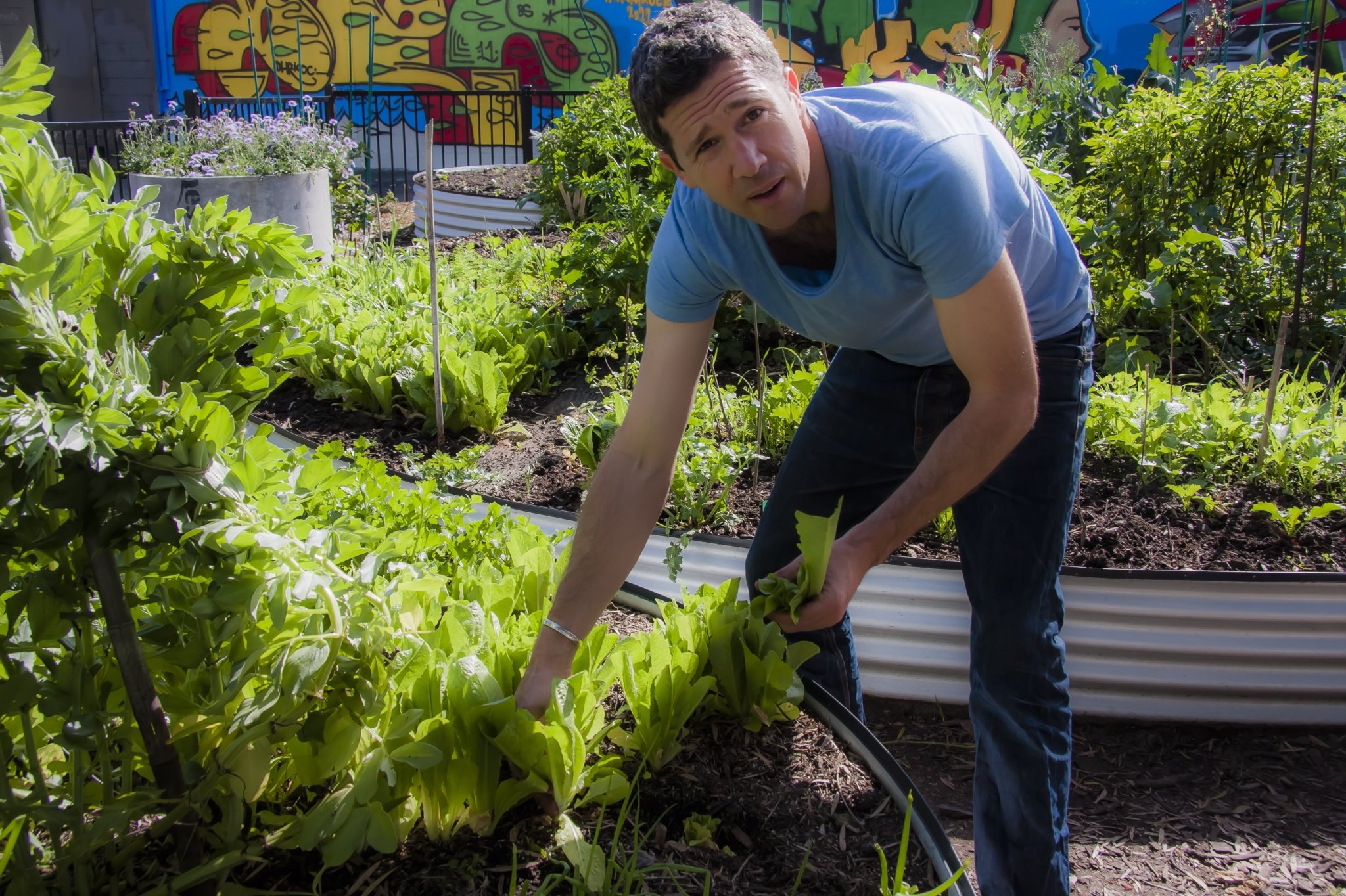
... well, not quite, but they are appearing in all kinds of places such as at the end of soccer fields, like the Alexandria Community Garden.
Second photo below shows what might be Sydney's smallest community garden — Charlie's Garden in the Charles Kernan Reserve in inner urban Darlington. The City of Sydney installed the garden when renovating the reserve and handed it over to community management.
Below that are the terraces of Glovers Community Garden in Rozelle in Sydney's Inner West. Glovers, started in 1986, is the city and NSW's oldest community garden. The first community garden in Australia is Nunuwading Community Garden in Melbourne, started in 1977.
Second photo below shows what might be Sydney's smallest community garden — Charlie's Garden in the Charles Kernan Reserve in inner urban Darlington. The City of Sydney installed the garden when renovating the reserve and handed it over to community management.
Below that are the terraces of Glovers Community Garden in Rozelle in Sydney's Inner West. Glovers, started in 1986, is the city and NSW's oldest community garden. The first community garden in Australia is Nunuwading Community Garden in Melbourne, started in 1977.
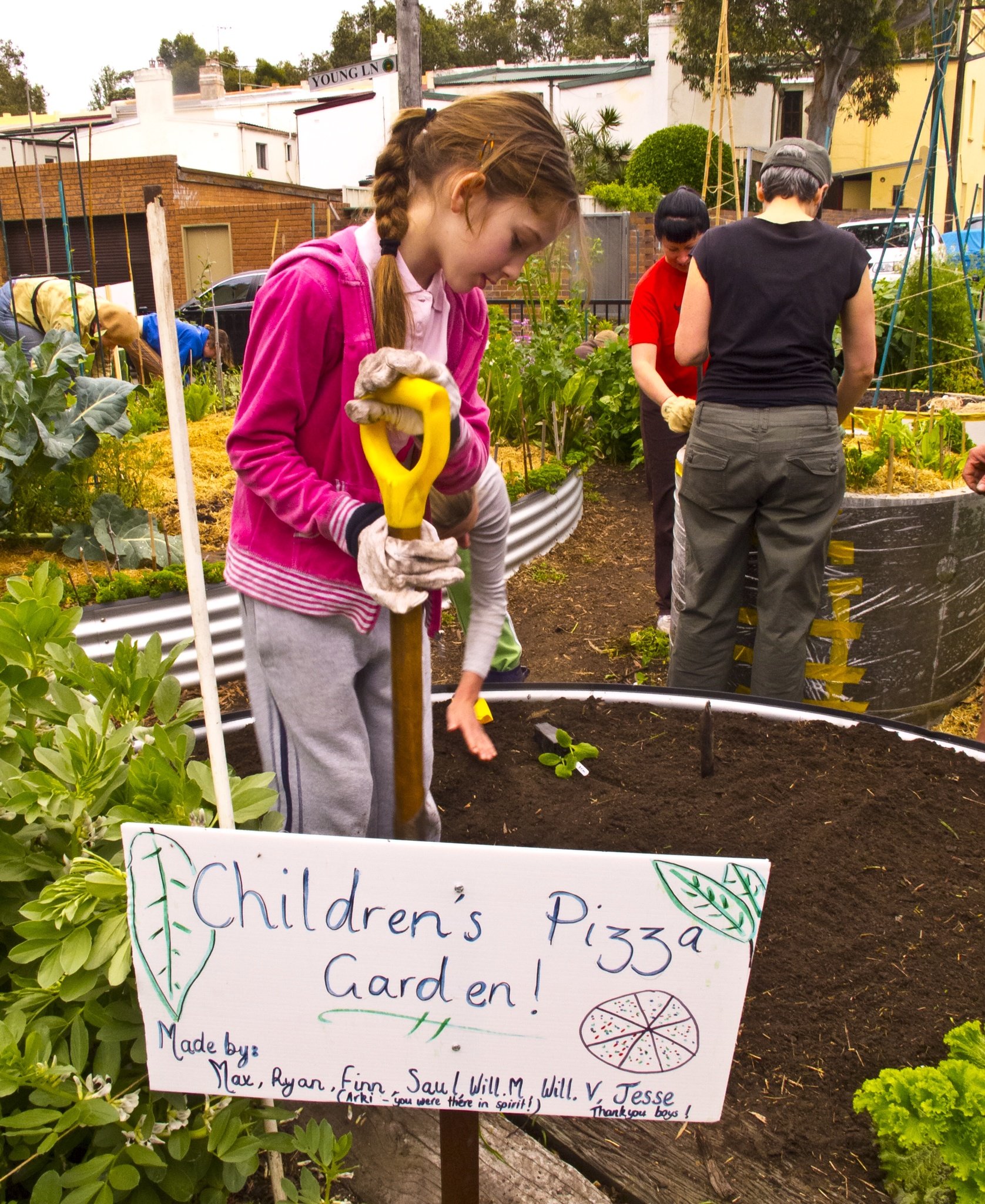
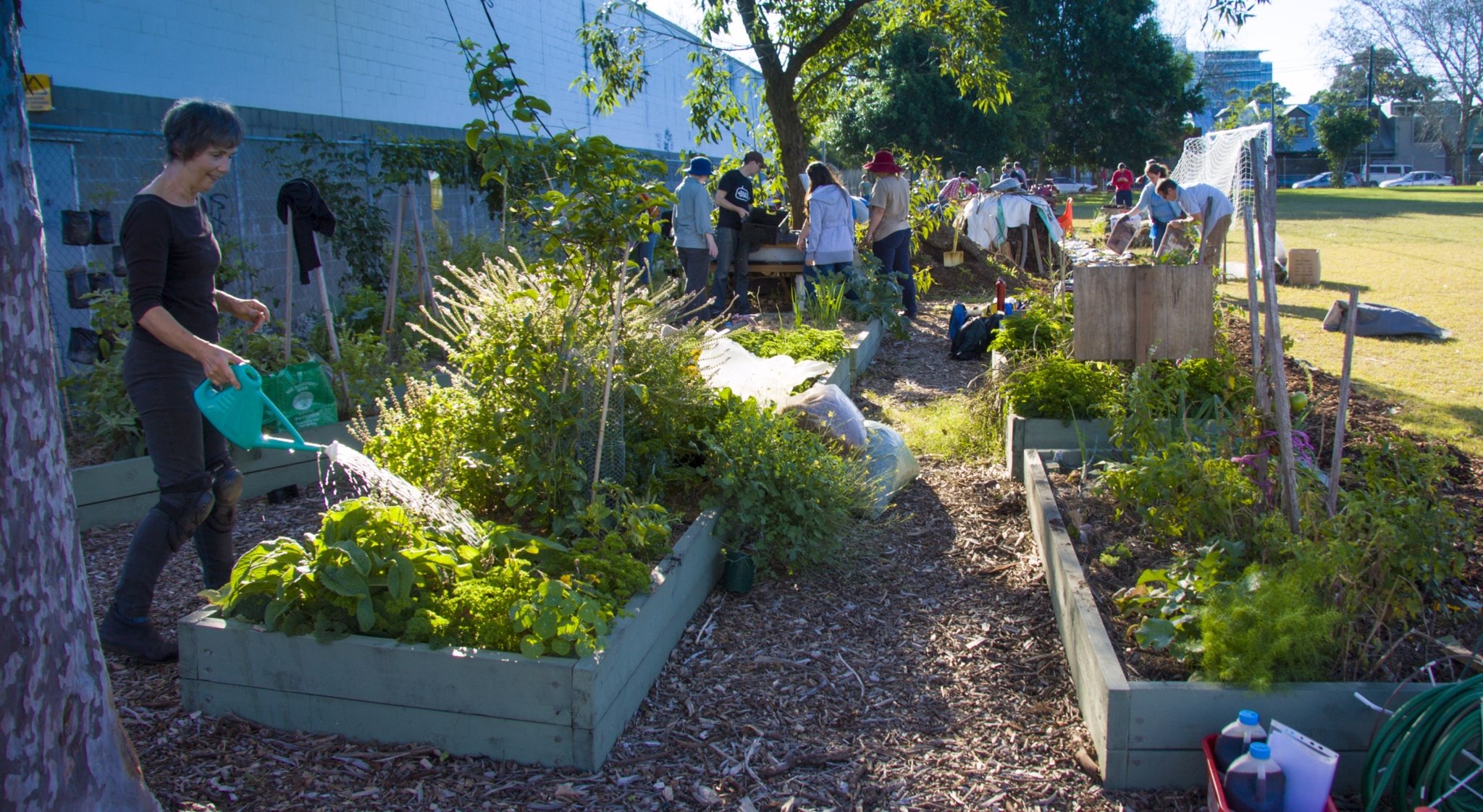
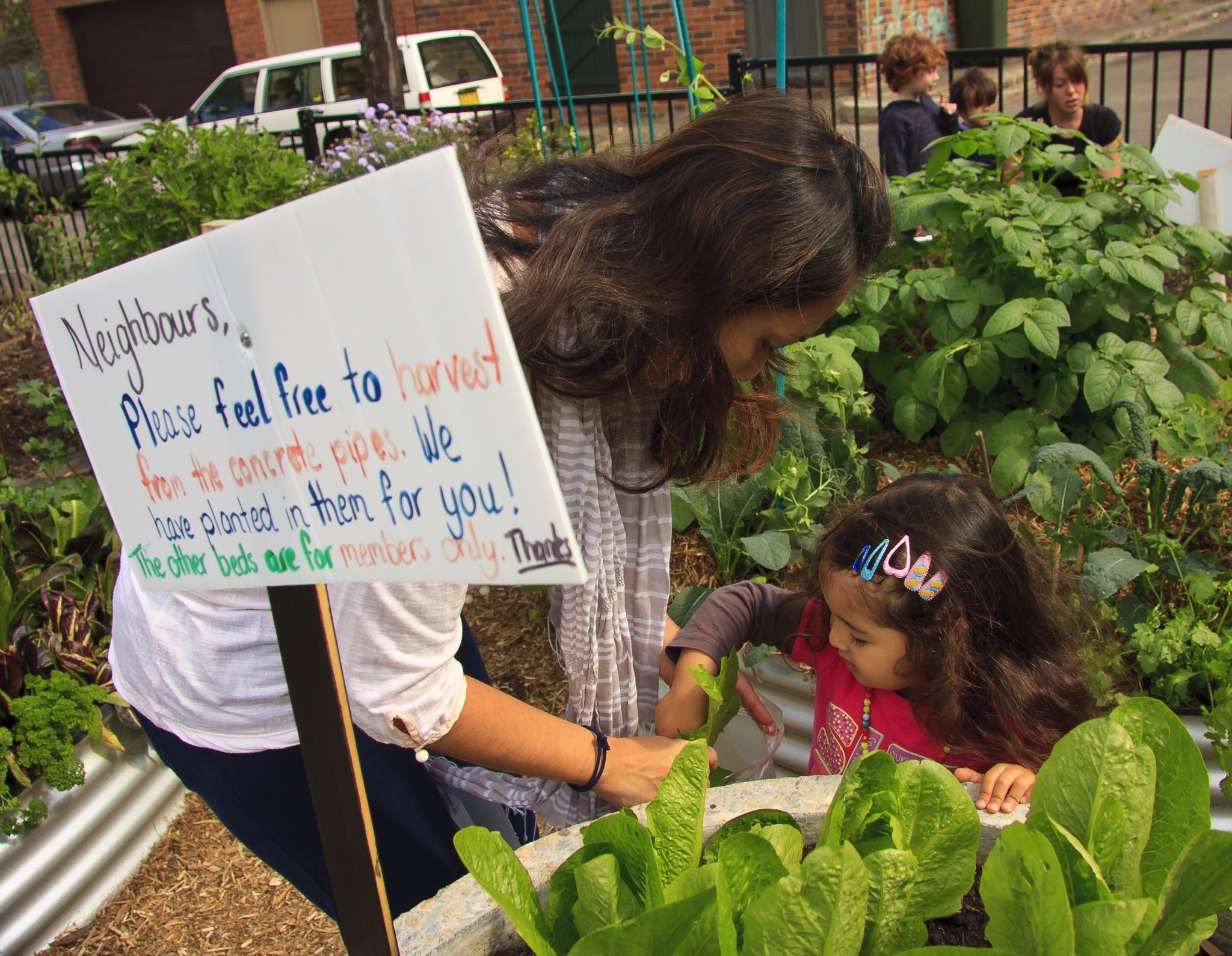
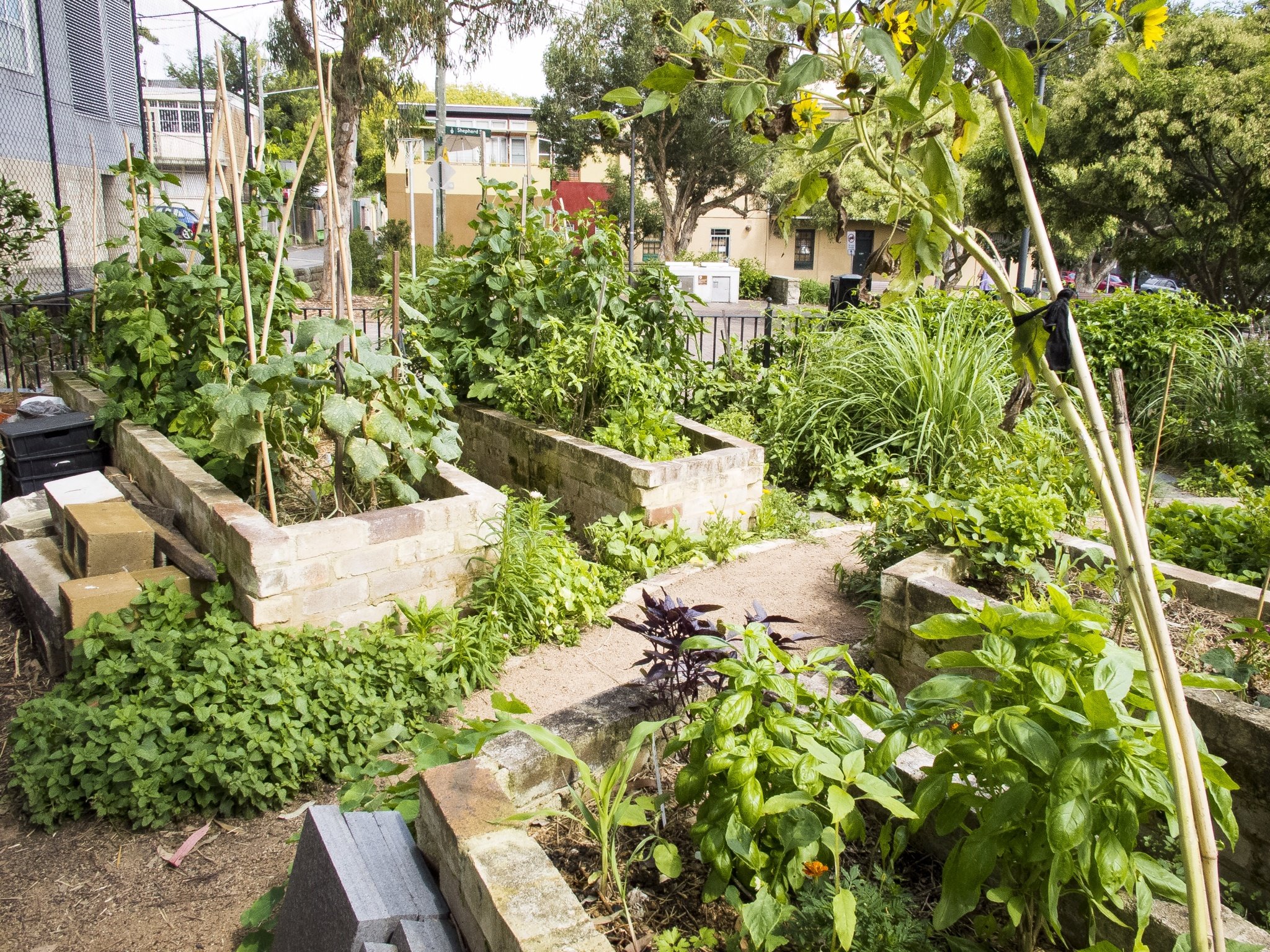
AN EDUCATIONAL ROLE
Community gardens can play a role in formal as well as informal education.
Leesa Burton started working at James Street Reserve Community Garden as part of her studies in primary education. She went on to a local government science and sustainability school excursion program at a sustainability education centre in eastern Sydney.
Community gardens can play a role in formal as well as informal education.
Leesa Burton started working at James Street Reserve Community Garden as part of her studies in primary education. She went on to a local government science and sustainability school excursion program at a sustainability education centre in eastern Sydney.
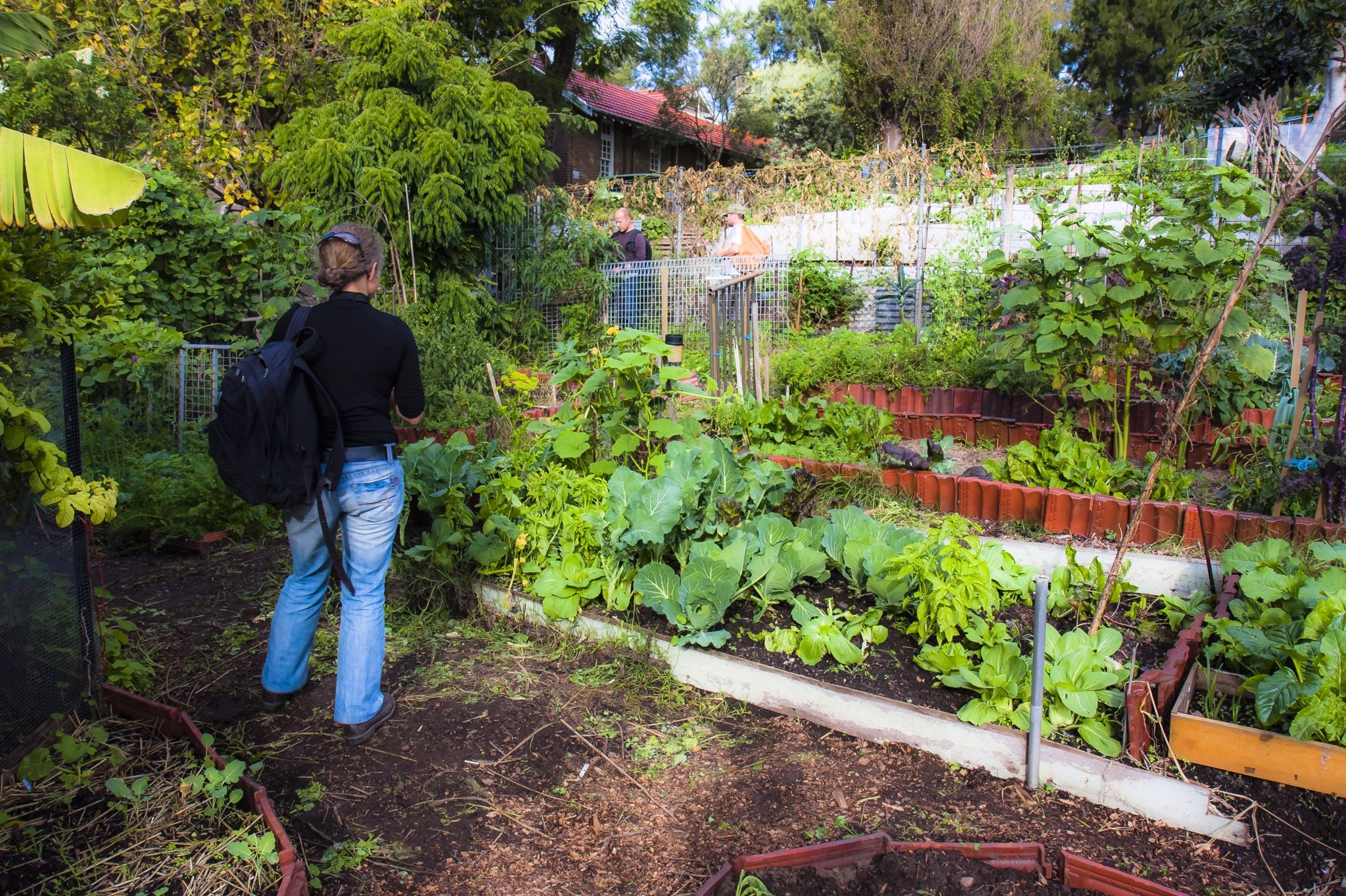
A garden in Waverley...
SOMETHING NEW IN THE PARK...
Coogee Community Garden, just a few blocks from Coogee Beach in Sydney's Eastern Suburbs, made its start in 2014 after two years of planning and seeking permission.
The garden features both shared and private plots. The garden shed now has a dent in it after strong winds broke a branch from the adjacent tree, which fell onto the shed.
The water tanks store roofwater from the scout hall next door. The water is used to irrigate the garden.
Raised garden beds were built because of possible soil contamination. Bark chip is used as an economical path material.
Coogee Community Garden, just a few blocks from Coogee Beach in Sydney's Eastern Suburbs, made its start in 2014 after two years of planning and seeking permission.
The garden features both shared and private plots. The garden shed now has a dent in it after strong winds broke a branch from the adjacent tree, which fell onto the shed.
The water tanks store roofwater from the scout hall next door. The water is used to irrigate the garden.
Raised garden beds were built because of possible soil contamination. Bark chip is used as an economical path material.
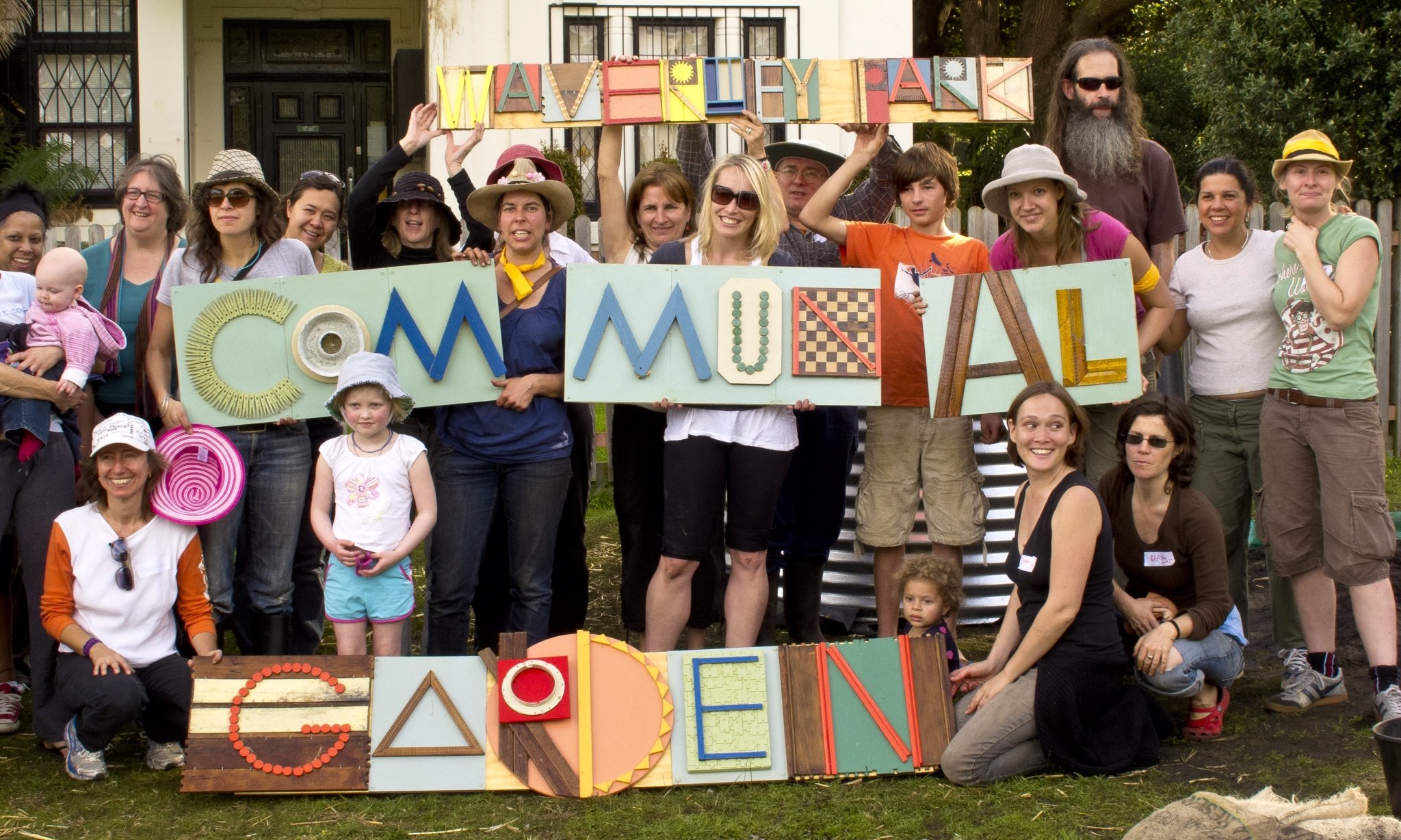
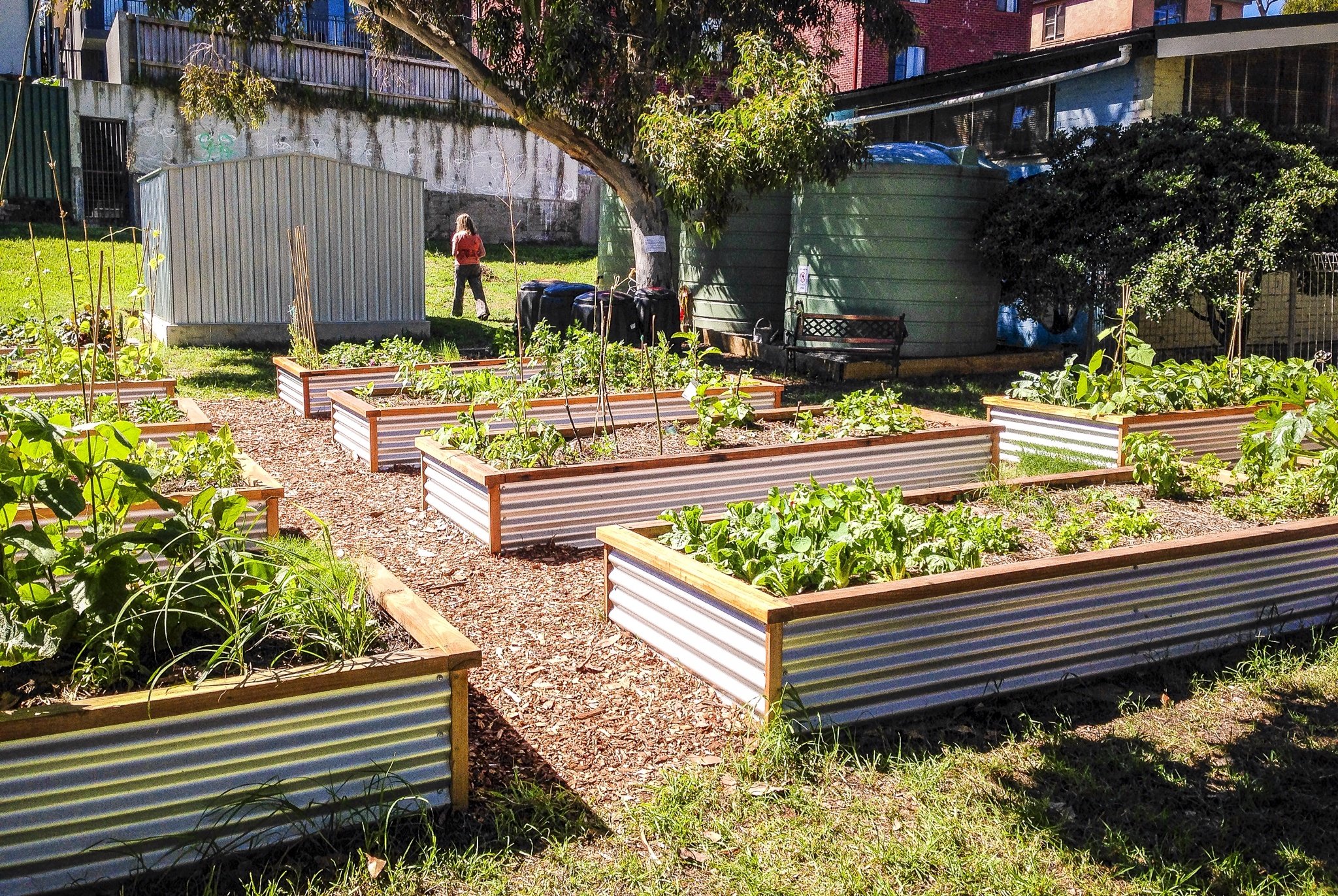
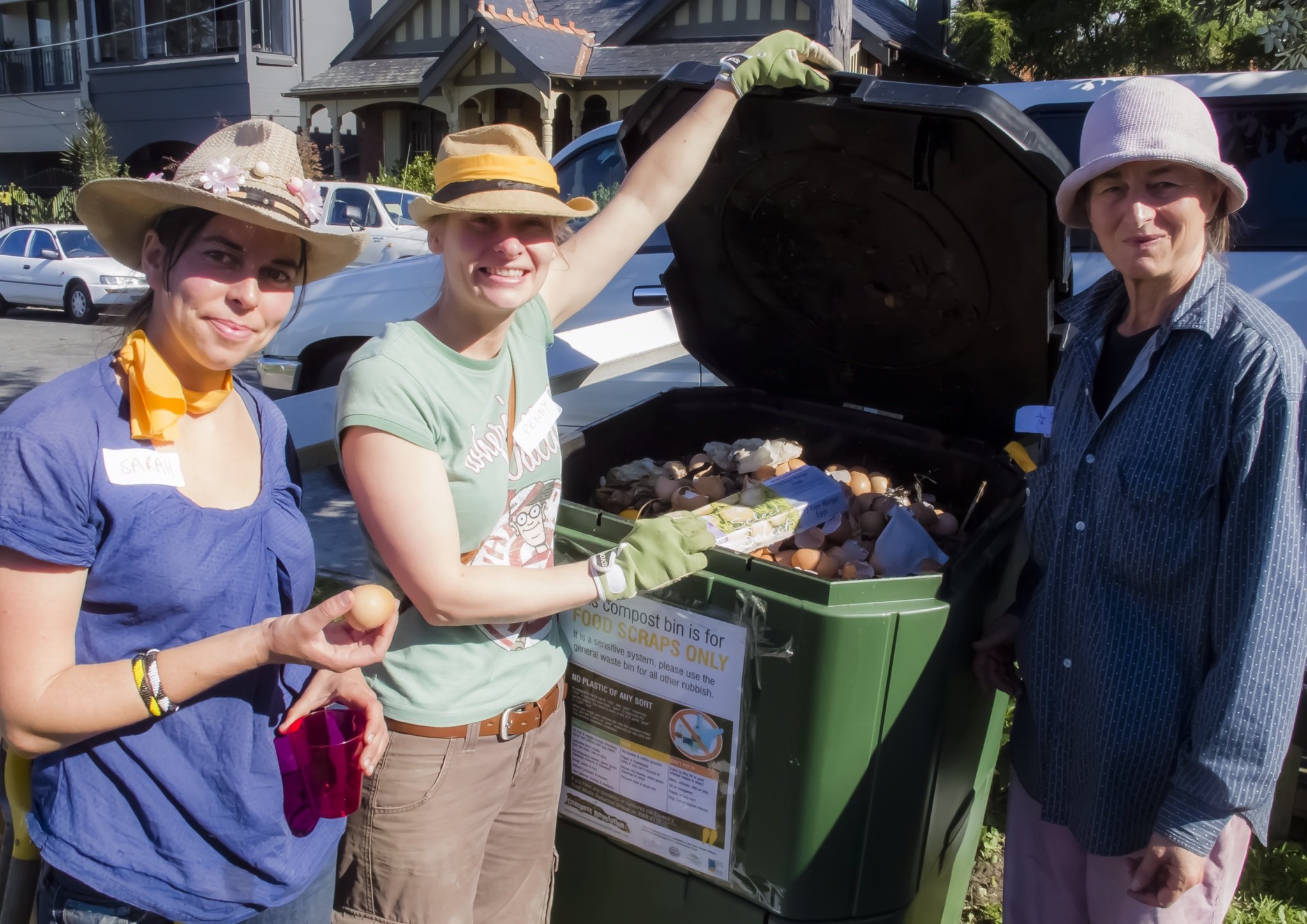
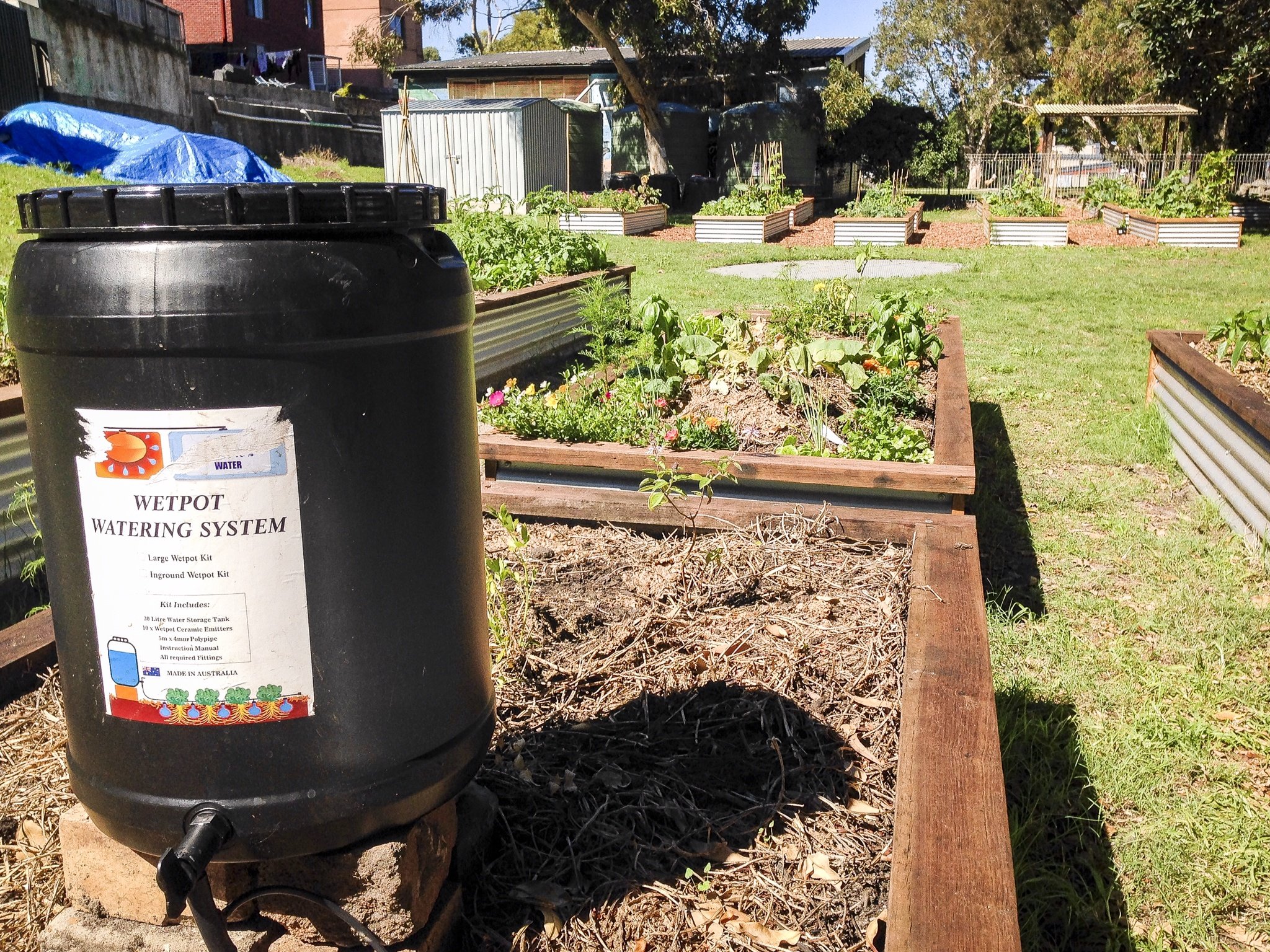
NEAR NEWCASTLE
Koorangang Island on Newcastle's outskirts is home to a large city farm.
Koorangang Island on Newcastle's outskirts is home to a large city farm.
Community gardens — places where people come together to garden, socialise and learn
Compost — free fertiliser from waste
At Randwick Community Organic Garden in Sydney's Eastern Suburbs, there's always time to sit and talk.
The garden moved to its present location over six years ago, following its move from the old Randwick Community Centre which was demolished and rebuilt.
The garden offers shared gardening, plots after a qualifying period and a community chook system.
The garden moved to its present location over six years ago, following its move from the old Randwick Community Centre which was demolished and rebuilt.
The garden offers shared gardening, plots after a qualifying period and a community chook system.
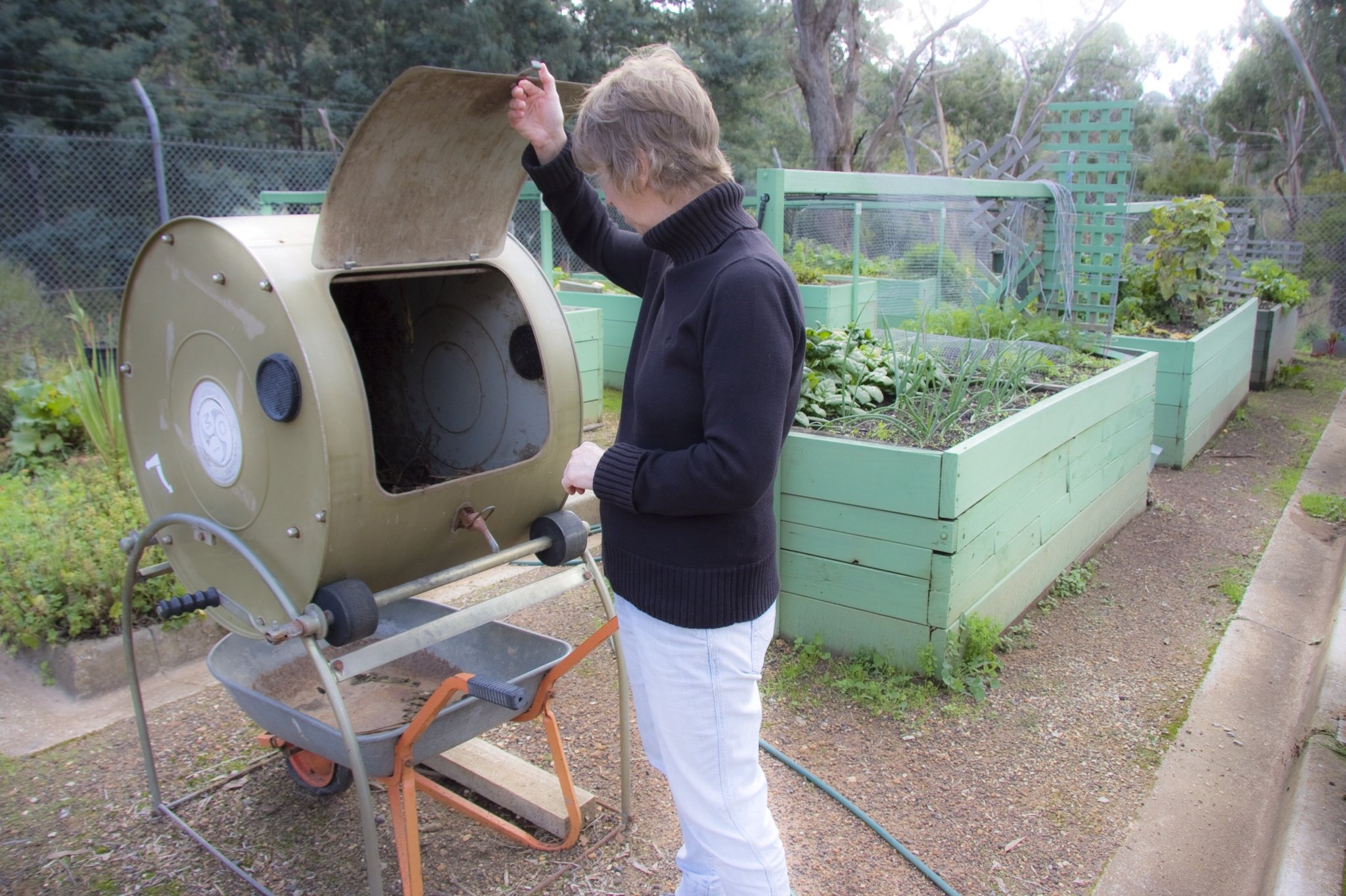
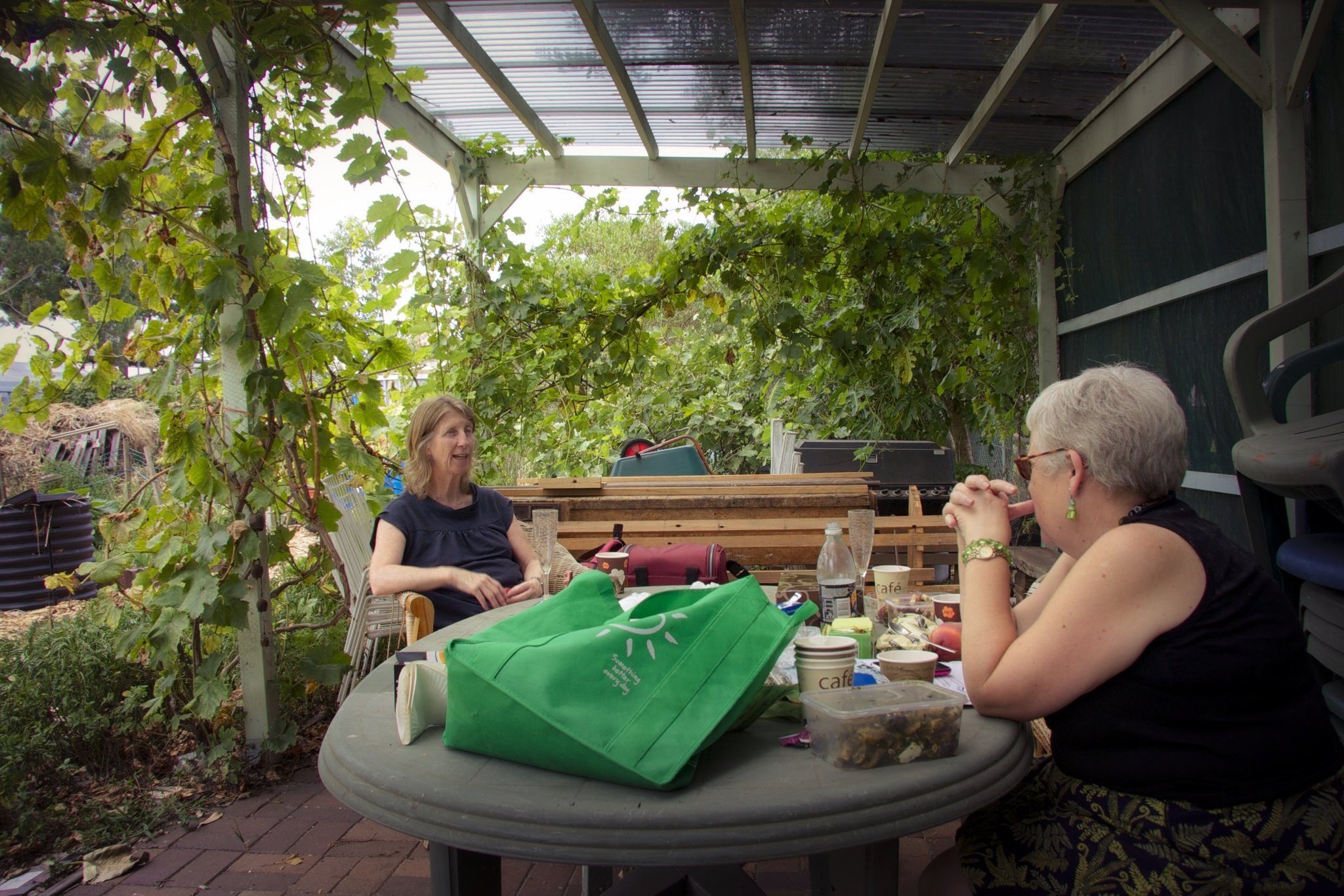
ABOVE:
No space for a community garden? That didn't bother these young women who found space on a Sydney University rooftop for their garden.
BELOW:
The Sydney University rooftop community garden is a container garden on wheels so that the plants can be moved around to follow the sun through the year.
No space for a community garden? That didn't bother these young women who found space on a Sydney University rooftop for their garden.
BELOW:
The Sydney University rooftop community garden is a container garden on wheels so that the plants can be moved around to follow the sun through the year.
Chris van Veen, from Bundeena Community Garden on Sydney's southern edge, harvests beetroot.
The garden is located on the grounds of the local primary school.
The garden is located on the grounds of the local primary school.
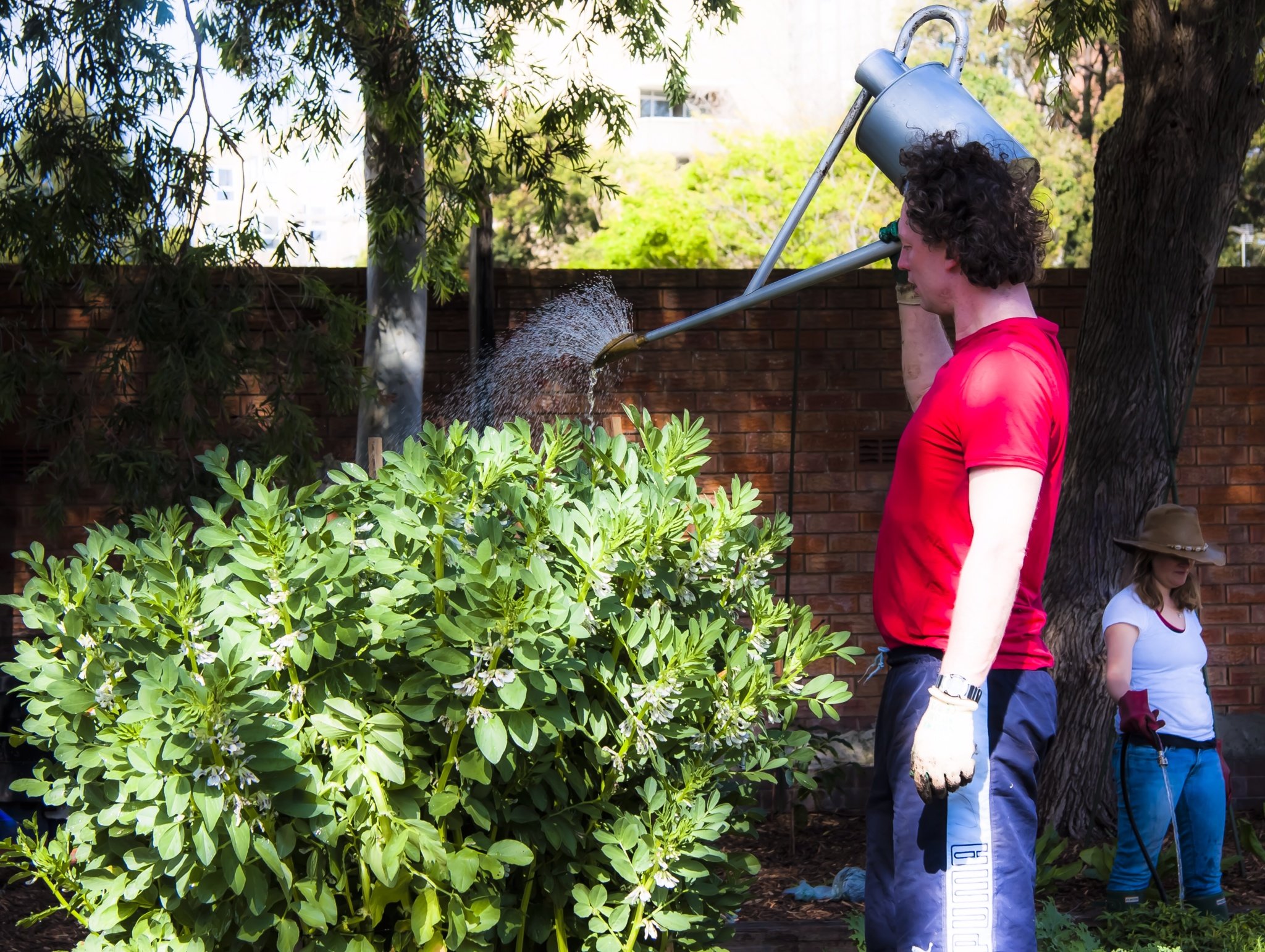
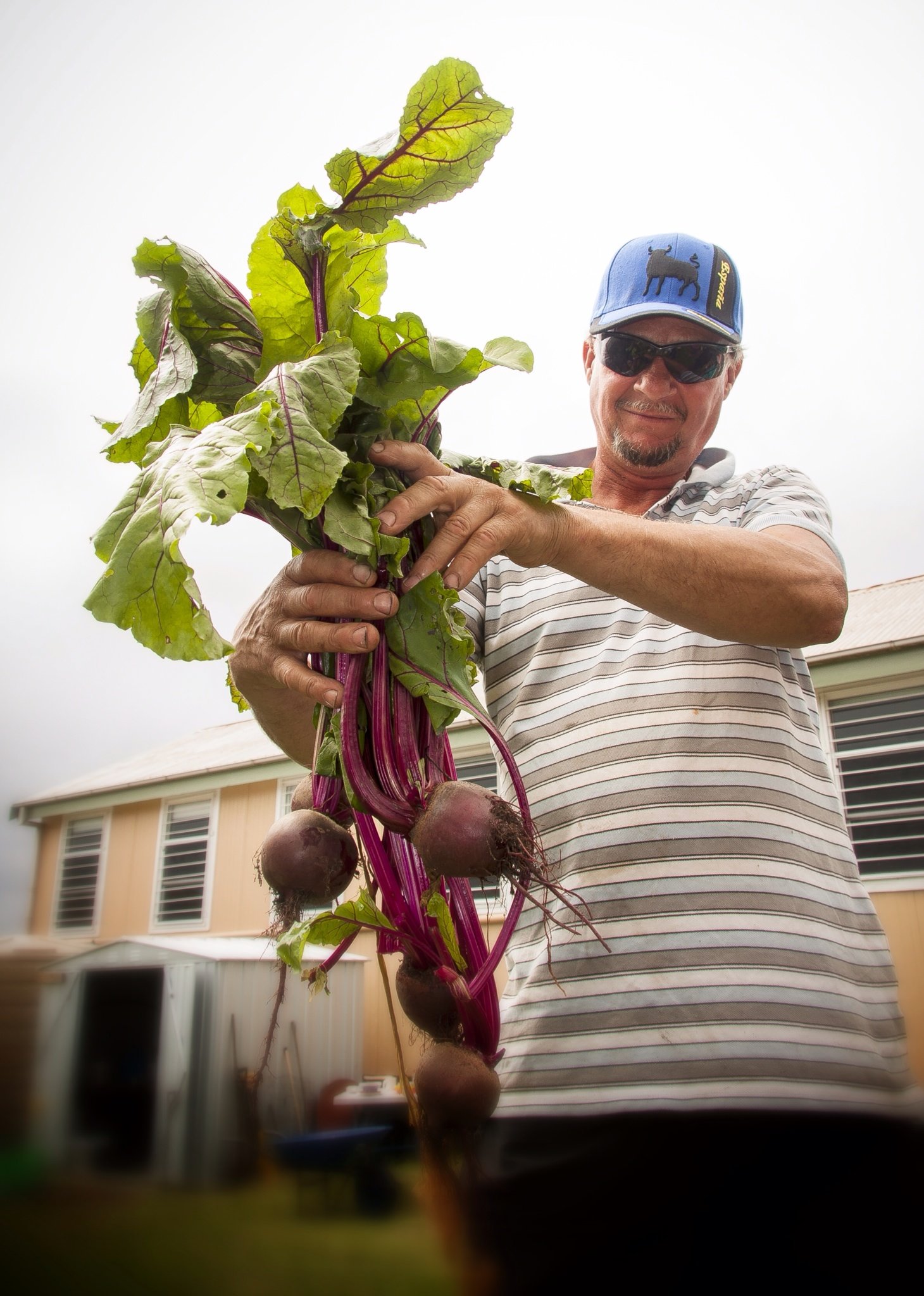
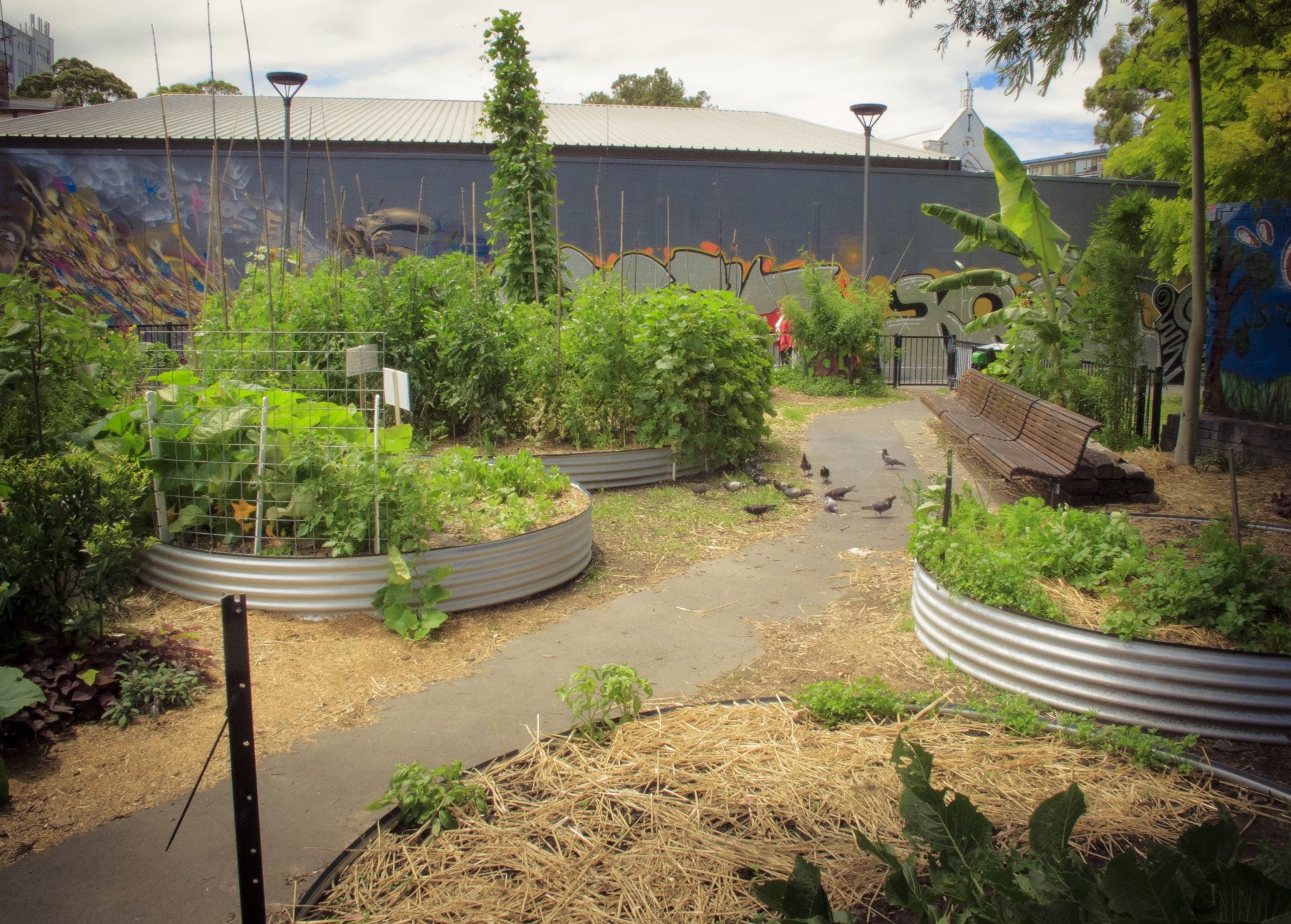
THE GARDEN IN WINTER...
Waverley Community Garden occupies a small portion of Waverley Park in Sydney's Eastern Suburbs.
This is a shared garden in which all gardeners share the work of whatever needs doing and share the produce. There are no private plots.
Photos 1 and 2 were made at the first construction day for the community garden.
Photo 3 is of the three female compost mavens who turn waste into fertiliser for the community garden. The compost bin is a community compost bin.
Photo 4 shows that even the humble compost bin can be turned into a colourful work of art.
This is a shared garden in which all gardeners share the work of whatever needs doing and share the produce. There are no private plots.
Photos 1 and 2 were made at the first construction day for the community garden.
Photo 3 is of the three female compost mavens who turn waste into fertiliser for the community garden. The compost bin is a community compost bin.
Photo 4 shows that even the humble compost bin can be turned into a colourful work of art.
The foliage has gone from the deciduous fruit trees that have turned the Blue Mountains Community Garden, in Katoomba, into a food forest.
Now, in winter, the colours of the garden are dominated by grey and brown, however there is still the green of food growing in the circular vegetable garden near the mudbrick storeroom.
The following images show the garden in early winter...
Now, in winter, the colours of the garden are dominated by grey and brown, however there is still the green of food growing in the circular vegetable garden near the mudbrick storeroom.
The following images show the garden in early winter...
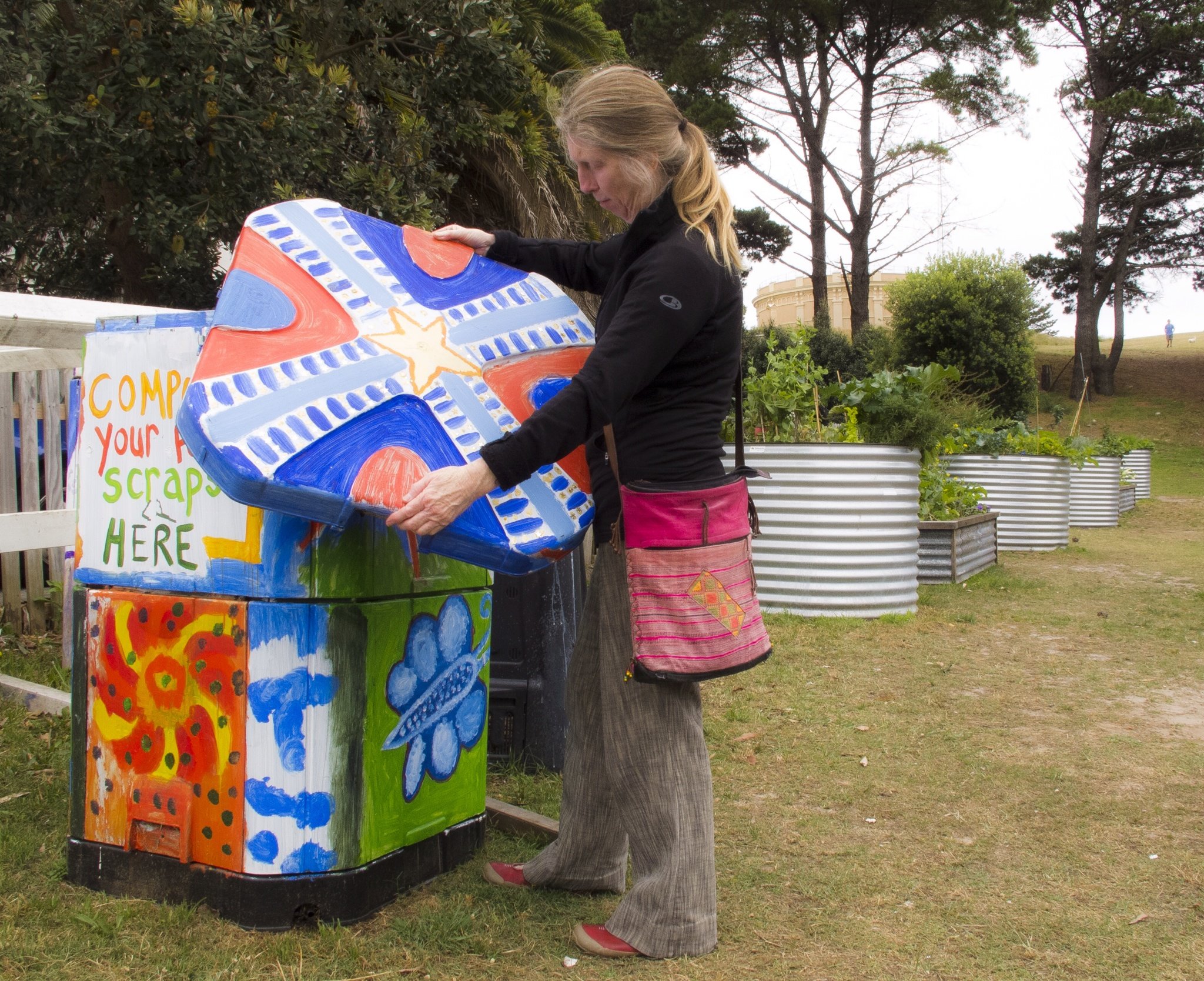
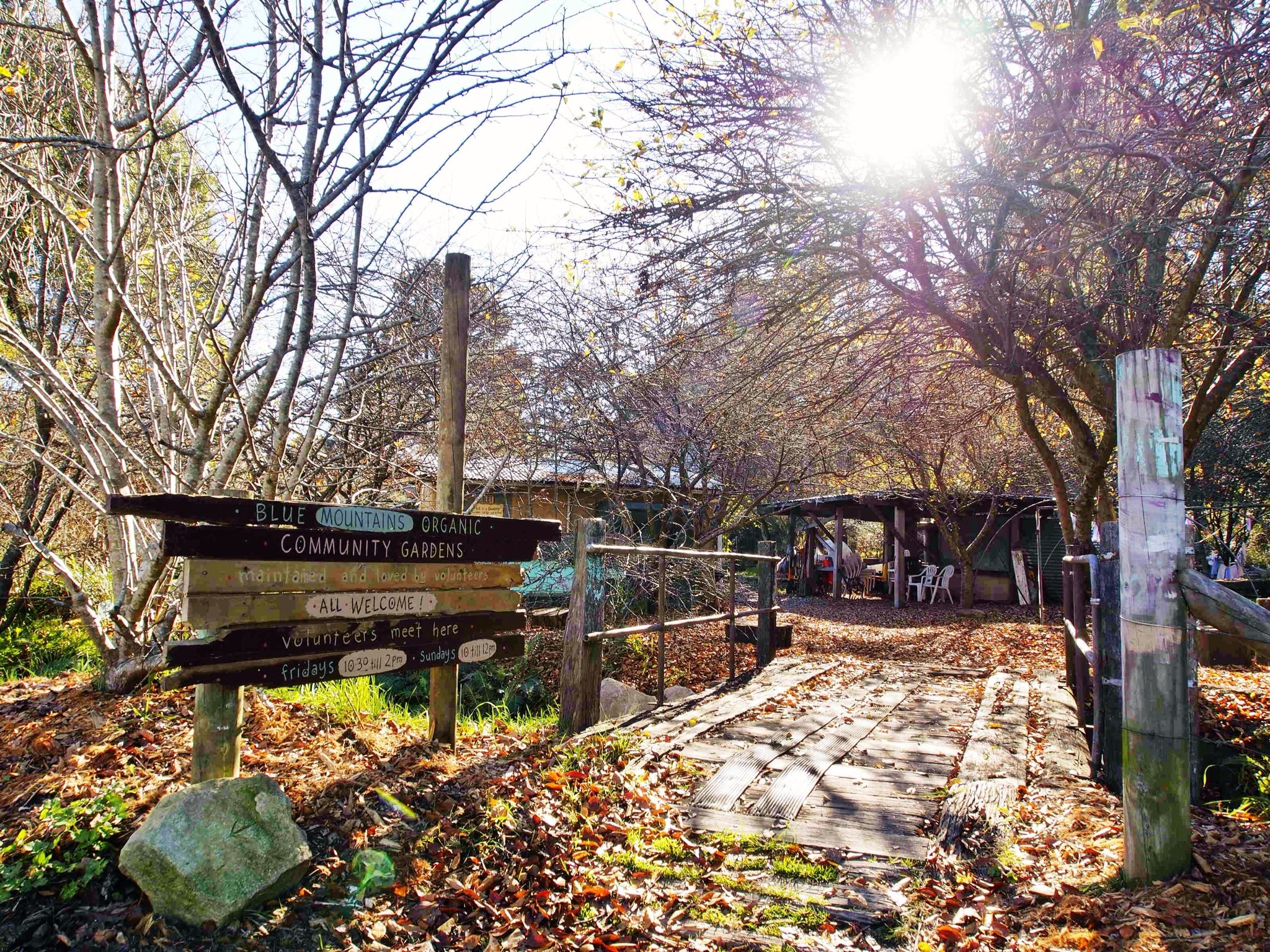
Composting is found in all community gardens where it turns waste into valuable fertiliser.
1. In Punchbowl Reserve Community Garden in Launceston, Tasmania, Fiona checks out a rotary, rapid composter. To empty the bin, the hatch is opened above the wheelbarrow.
2. At Paddington Community Garden in Sydney, Halen Morrison likes the way the gardeners turn their compost in a cement mixer.
THE IMPORTANCE OF LEADERS...
3. Every community garden needs its anchoring presence. Rob and Vicki are experienced community gardeners and are mainstays at the biodiverse, well-built and orderly Paddington Community Garden.
4. Checking how the leeks are growing at Common Ground Community Garden in Wellington, New Zealand.
COMMUNITY GARDENS CAN LOOK GOOD, TOO...
5. The grey foliage of globe artichoke contrasts with the darker green of other silverbeet in a community garden in Canberra.
1. In Punchbowl Reserve Community Garden in Launceston, Tasmania, Fiona checks out a rotary, rapid composter. To empty the bin, the hatch is opened above the wheelbarrow.
2. At Paddington Community Garden in Sydney, Halen Morrison likes the way the gardeners turn their compost in a cement mixer.
THE IMPORTANCE OF LEADERS...
3. Every community garden needs its anchoring presence. Rob and Vicki are experienced community gardeners and are mainstays at the biodiverse, well-built and orderly Paddington Community Garden.
4. Checking how the leeks are growing at Common Ground Community Garden in Wellington, New Zealand.
COMMUNITY GARDENS CAN LOOK GOOD, TOO...
5. The grey foliage of globe artichoke contrasts with the darker green of other silverbeet in a community garden in Canberra.
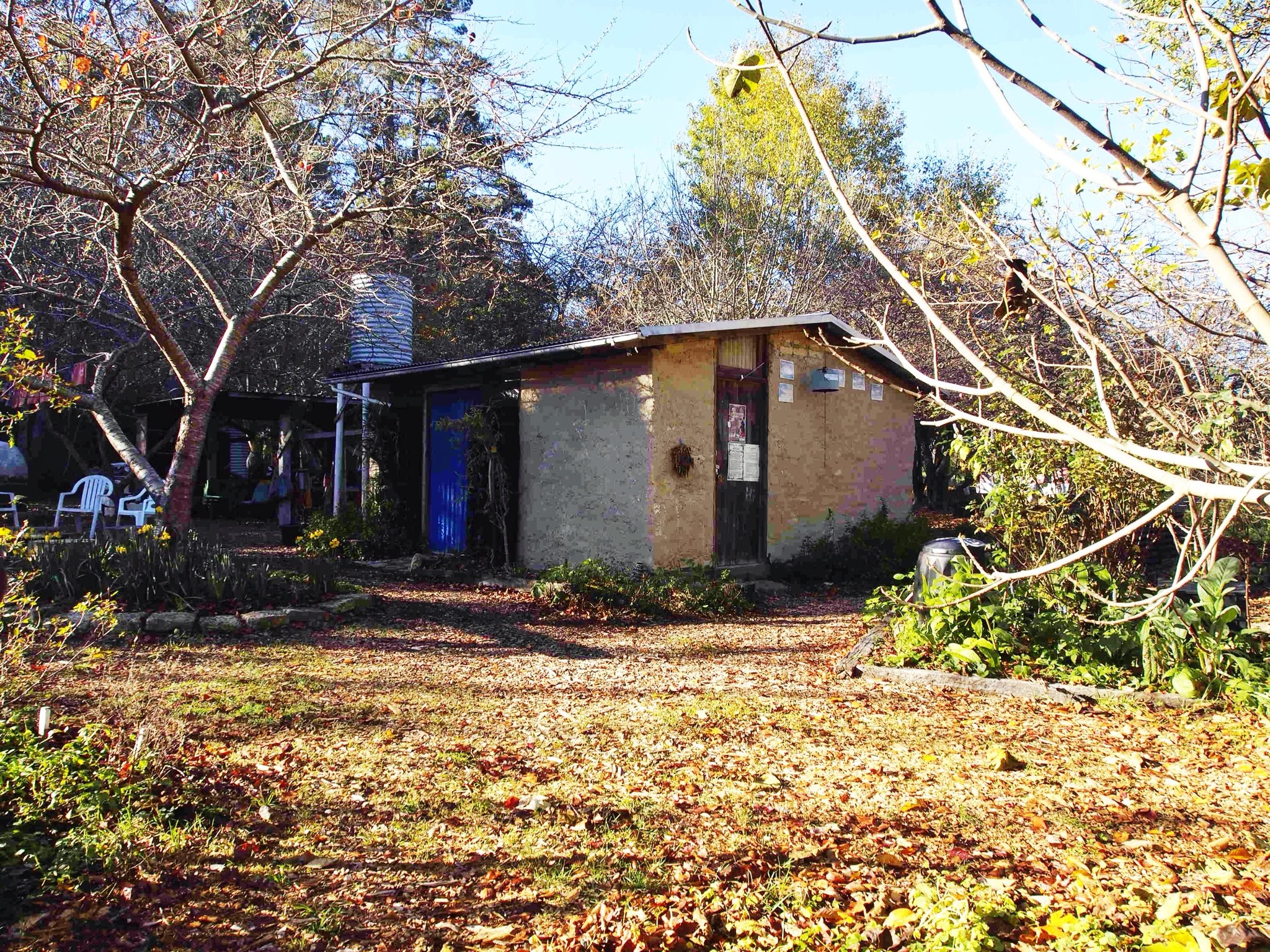
AT JAMES STREET...
James Street Reserve Community Garden in Sydney's inner urban Redfern occupies only half of a pocket park, yet it is big on production and in building a sense of place for the gardeners who live nearby.
James Street Reserve Community Garden in Sydney's inner urban Redfern occupies only half of a pocket park, yet it is big on production and in building a sense of place for the gardeners who live nearby.

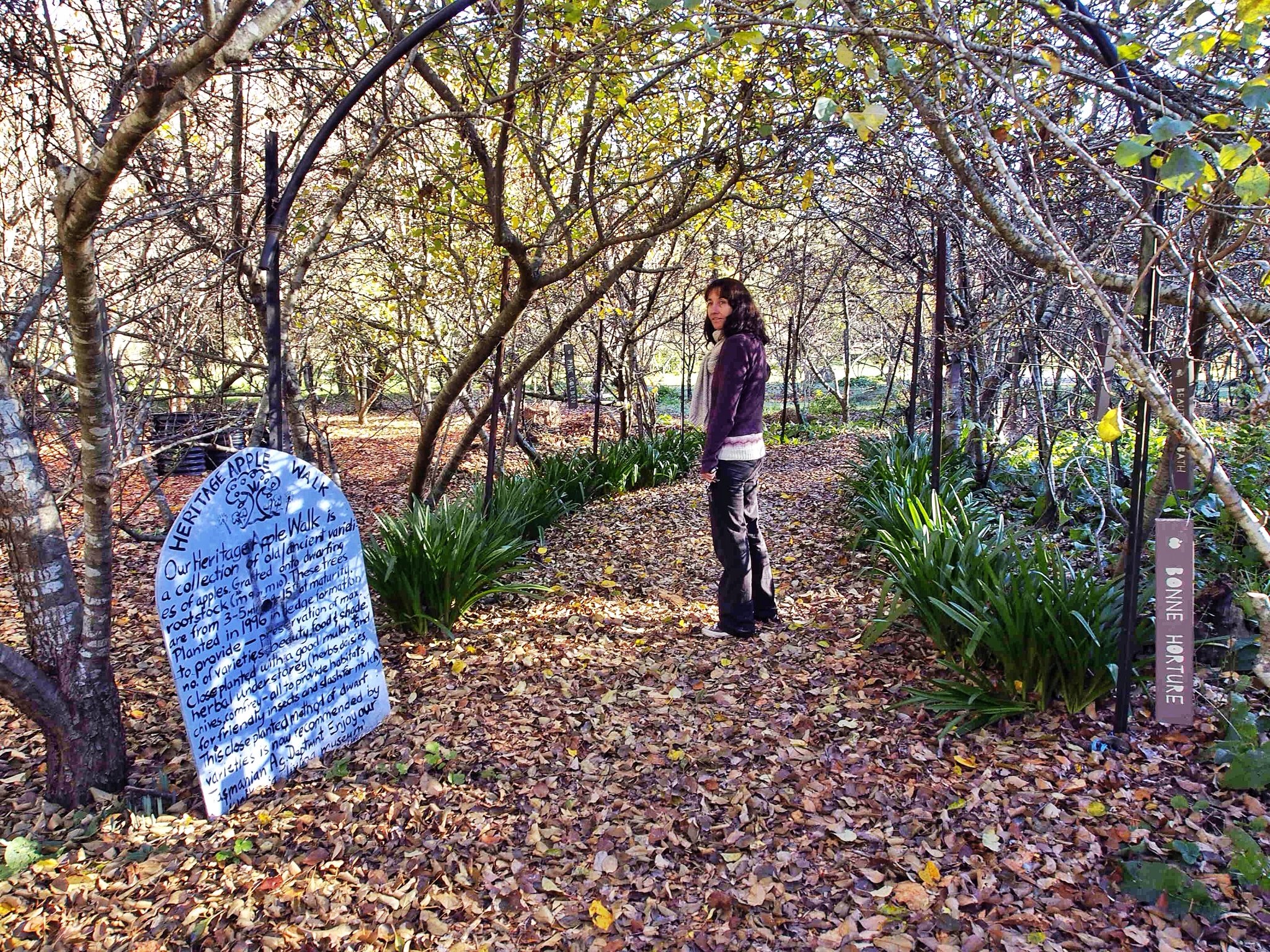
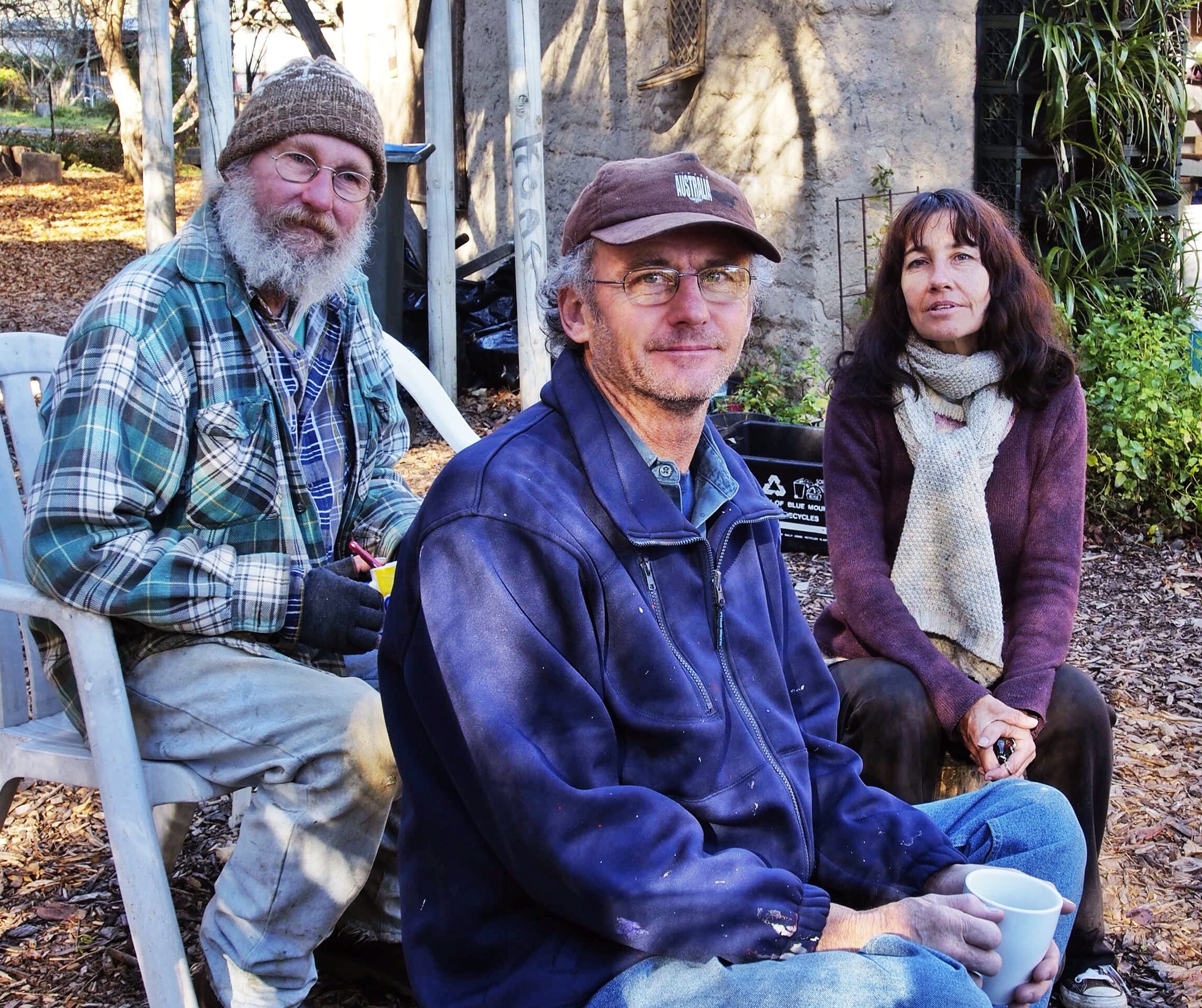
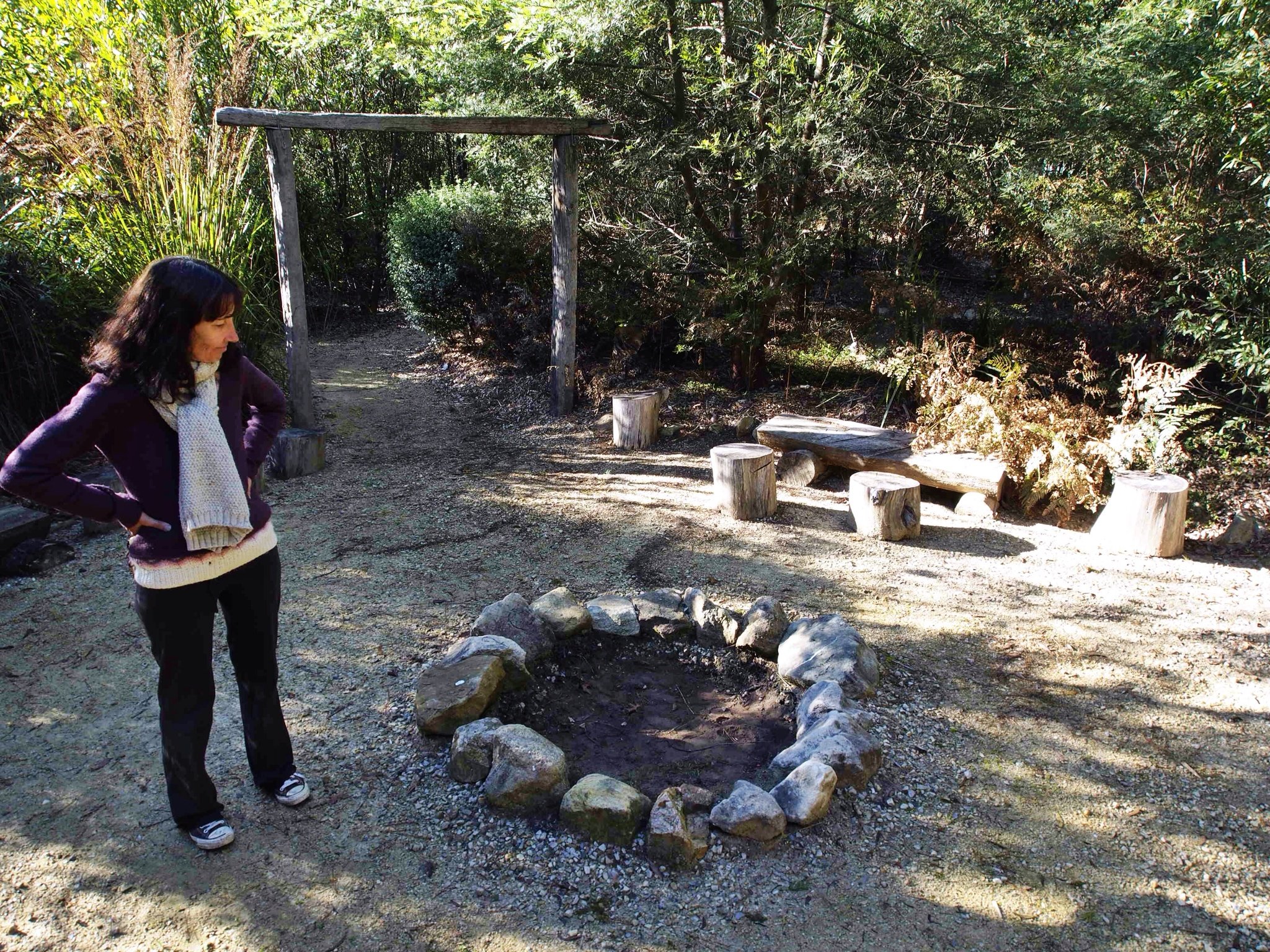
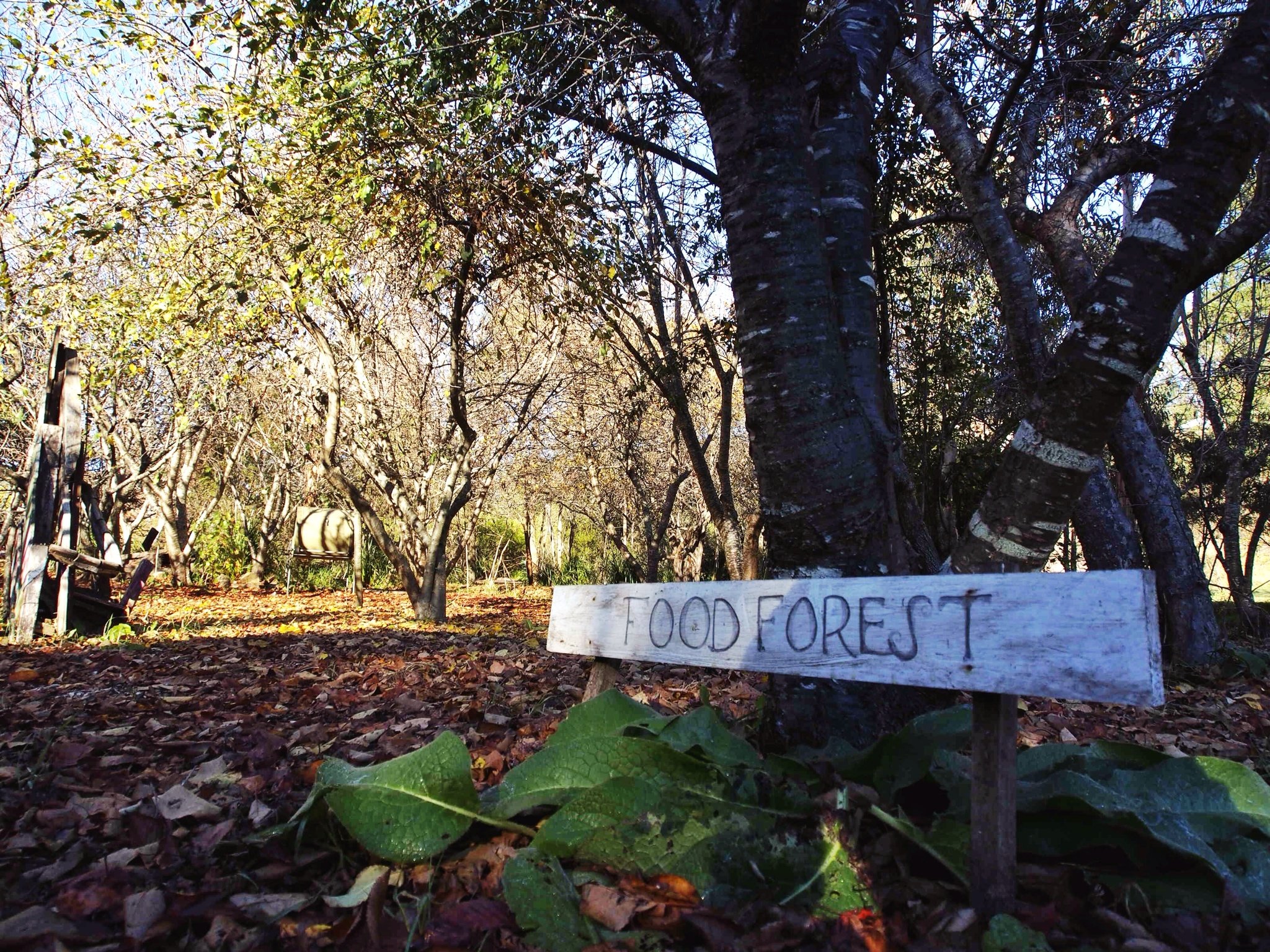
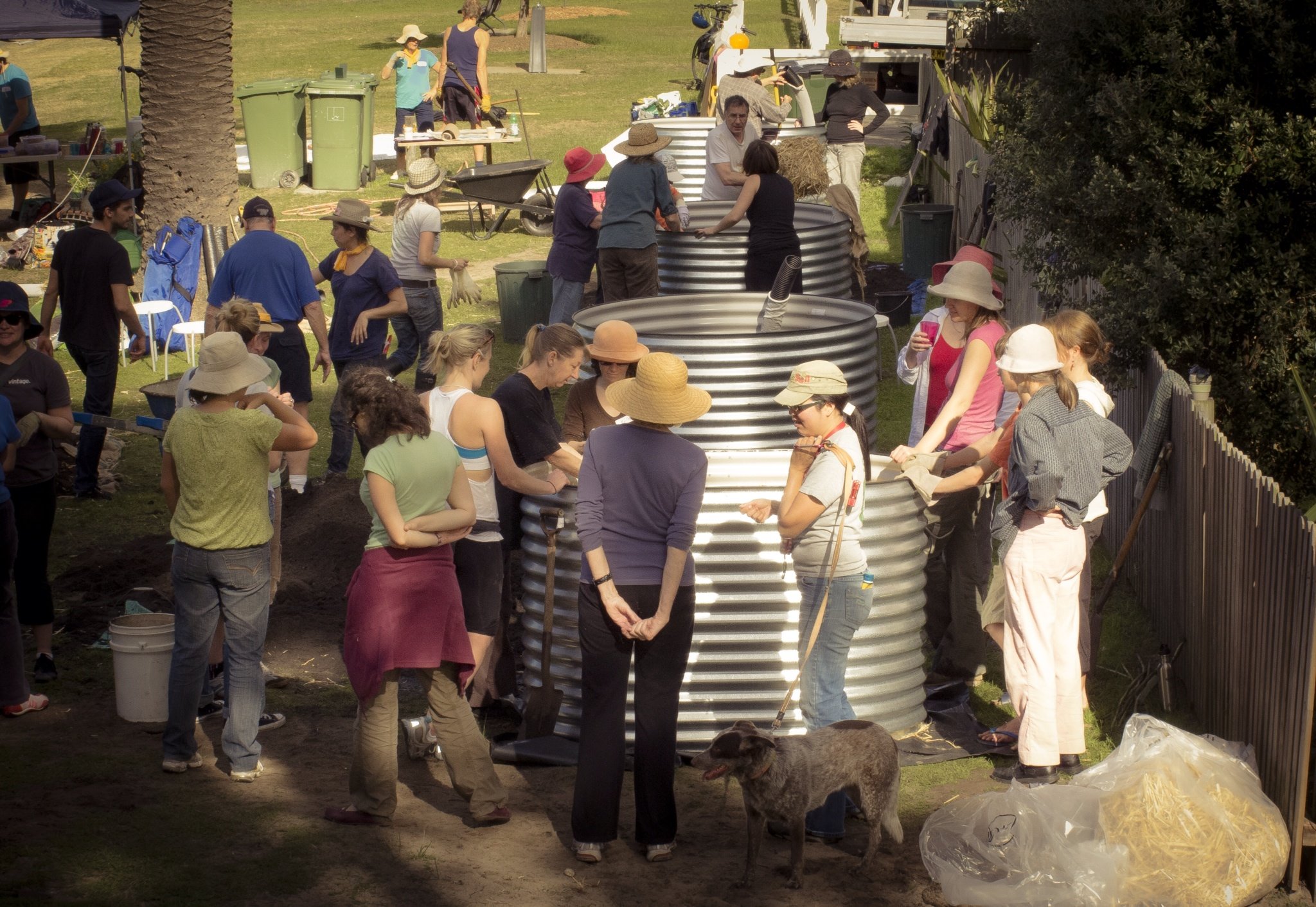
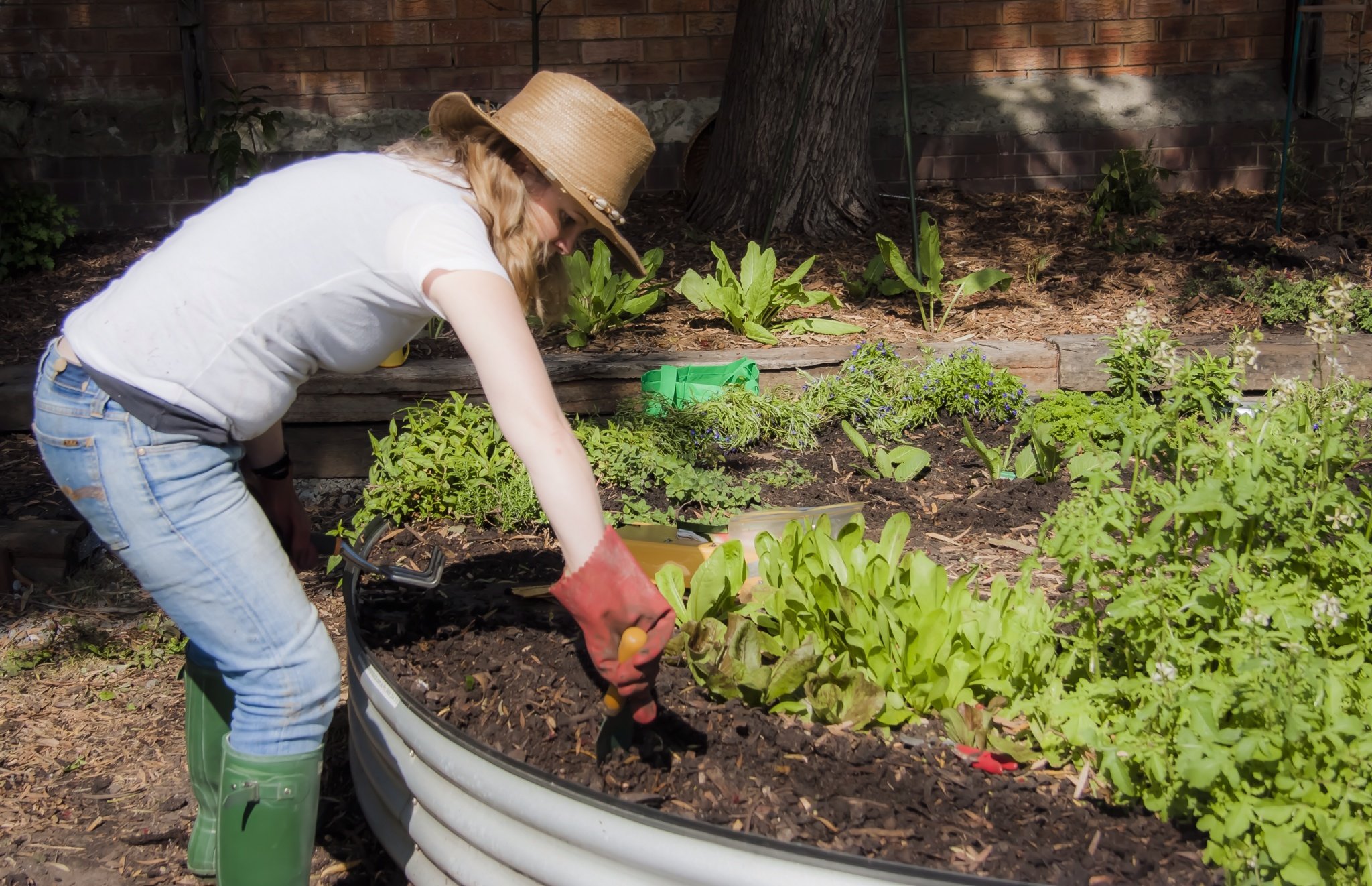
...it's an idea whose time is now, as thousands of citizens replace monocultures of lawn with polycultures of edible plants... turning parks and derelict land... council, church and school property... into urban mini-farms.
It's happening all over Australia, from far Darwin to chilly Hobart, west of the Great Divide and east too, from the land's western extremity in Perth to its eastern edge at Byron Bay.
But it's not only vegetables and fruit, flowers and herbs that are being grown in our increasing number of community gardens. It's communities, too, as people come together to collaborate in the planning, building and management of community food gardens large and small and, in doing so, learn to work cooperatively with others.
The purpose of this photo essay, essay number two, and others in the series is to provide a glimpse over the fence of our community gardens to show their diversity of design, plants and gardeners...
It's happening all over Australia, from far Darwin to chilly Hobart, west of the Great Divide and east too, from the land's western extremity in Perth to its eastern edge at Byron Bay.
But it's not only vegetables and fruit, flowers and herbs that are being grown in our increasing number of community gardens. It's communities, too, as people come together to collaborate in the planning, building and management of community food gardens large and small and, in doing so, learn to work cooperatively with others.
The purpose of this photo essay, essay number two, and others in the series is to provide a glimpse over the fence of our community gardens to show their diversity of design, plants and gardeners...
